I was lucky to present at the rearranged AOME Spring Conference on 16th September 2021.
This blog post is about the project I presented.
Below you can find a recording of my presentation, my slide set (complete with navigation) and full details of the project’s background, methodology and findings.

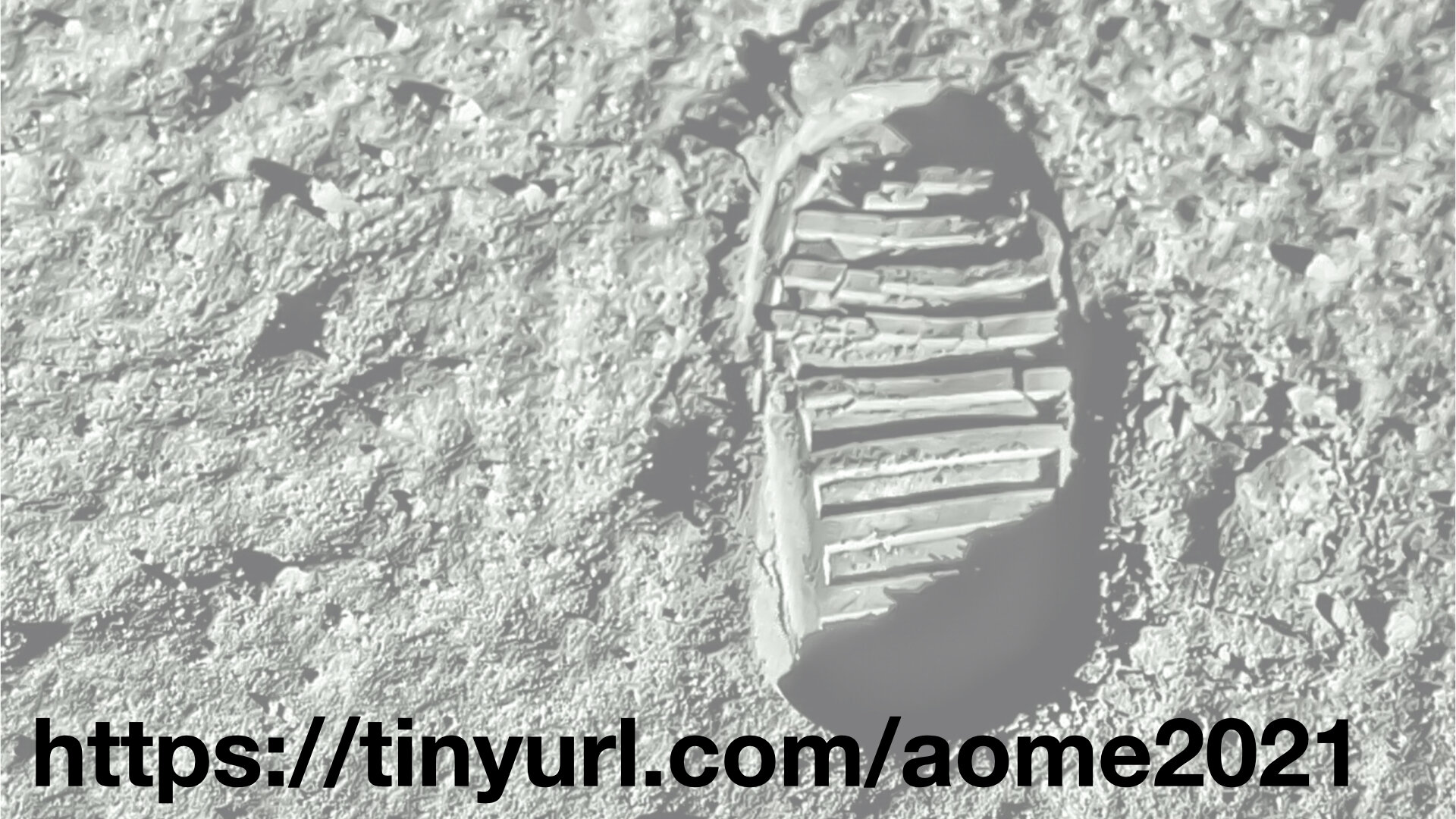

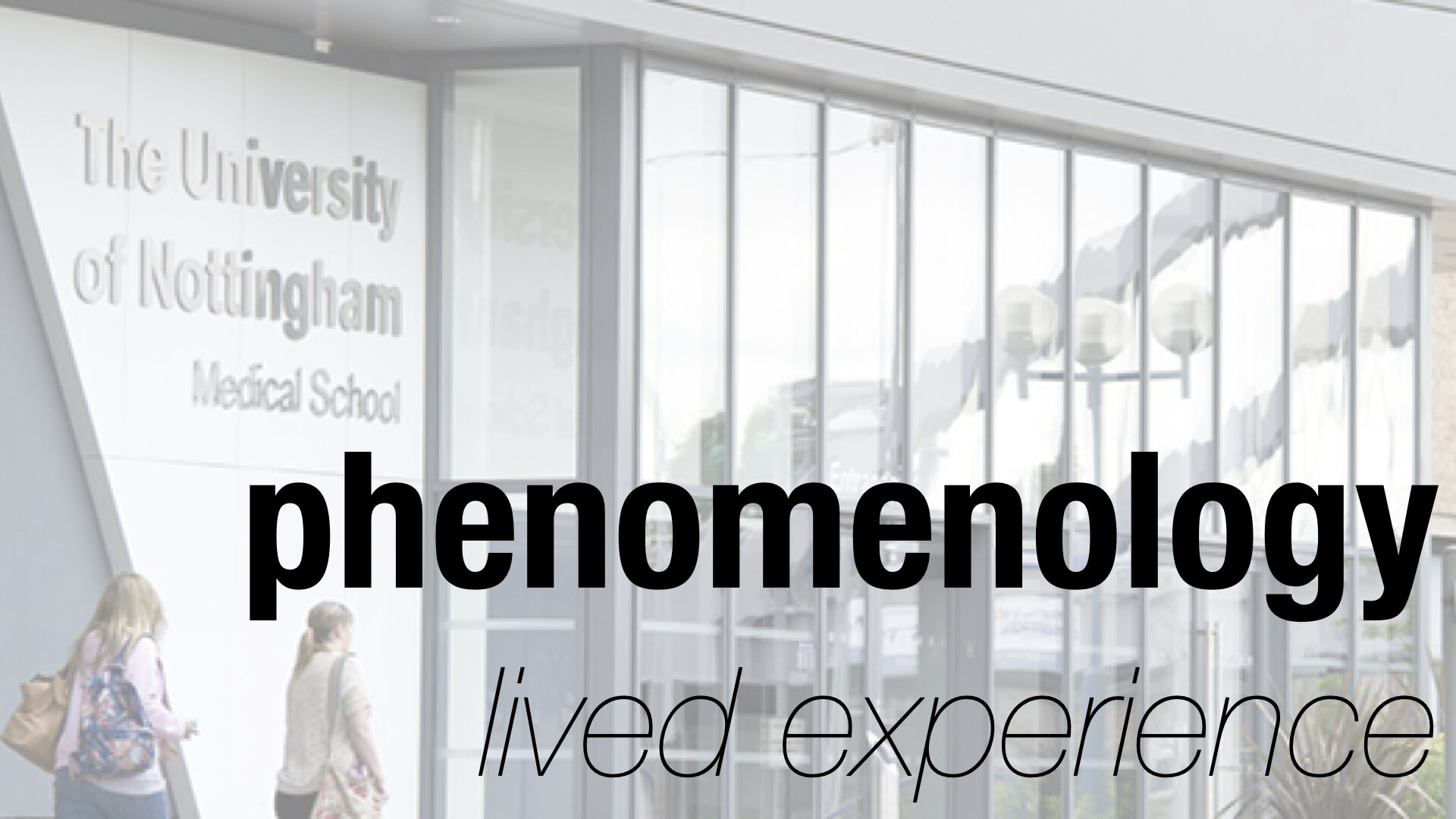
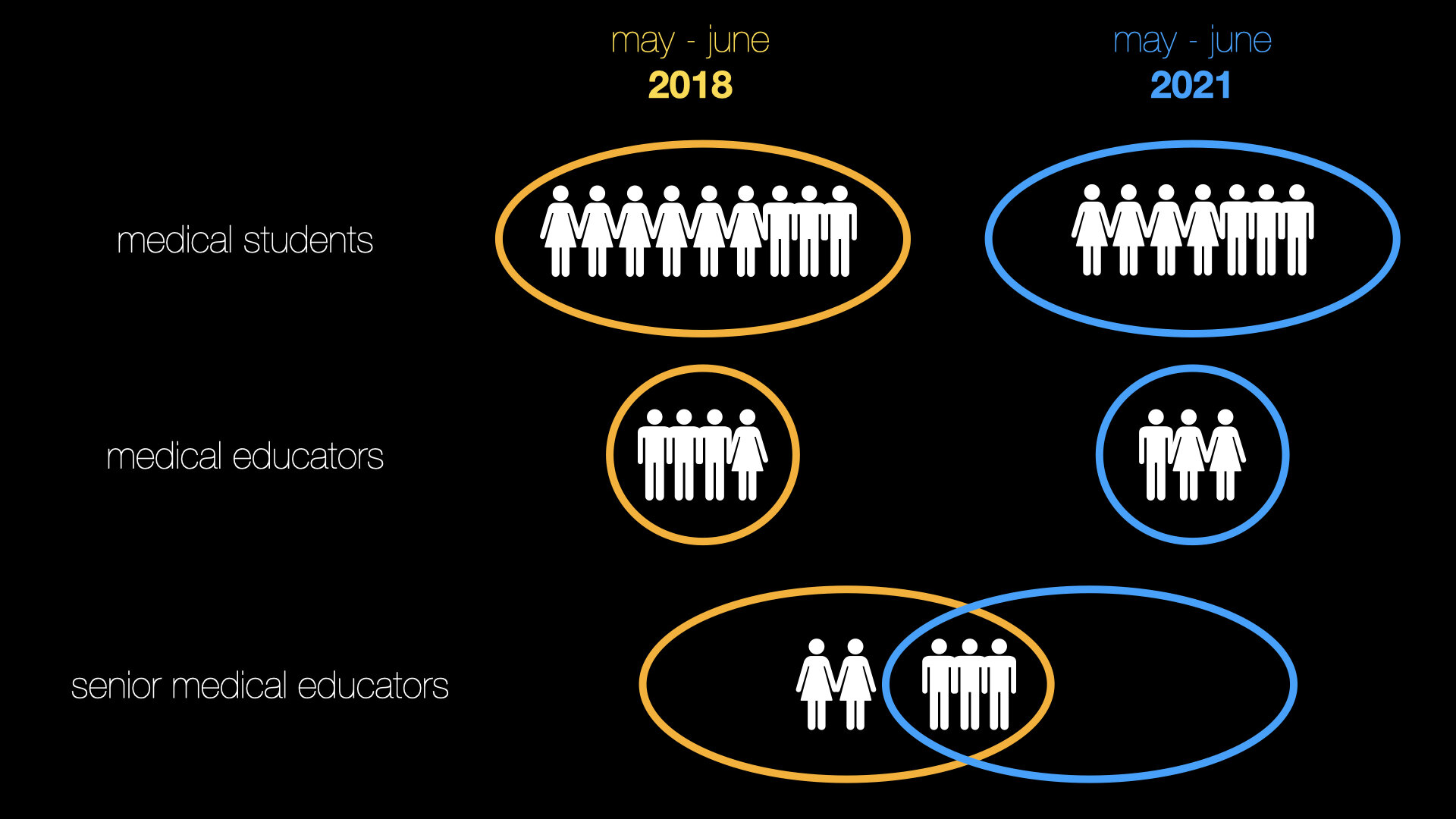
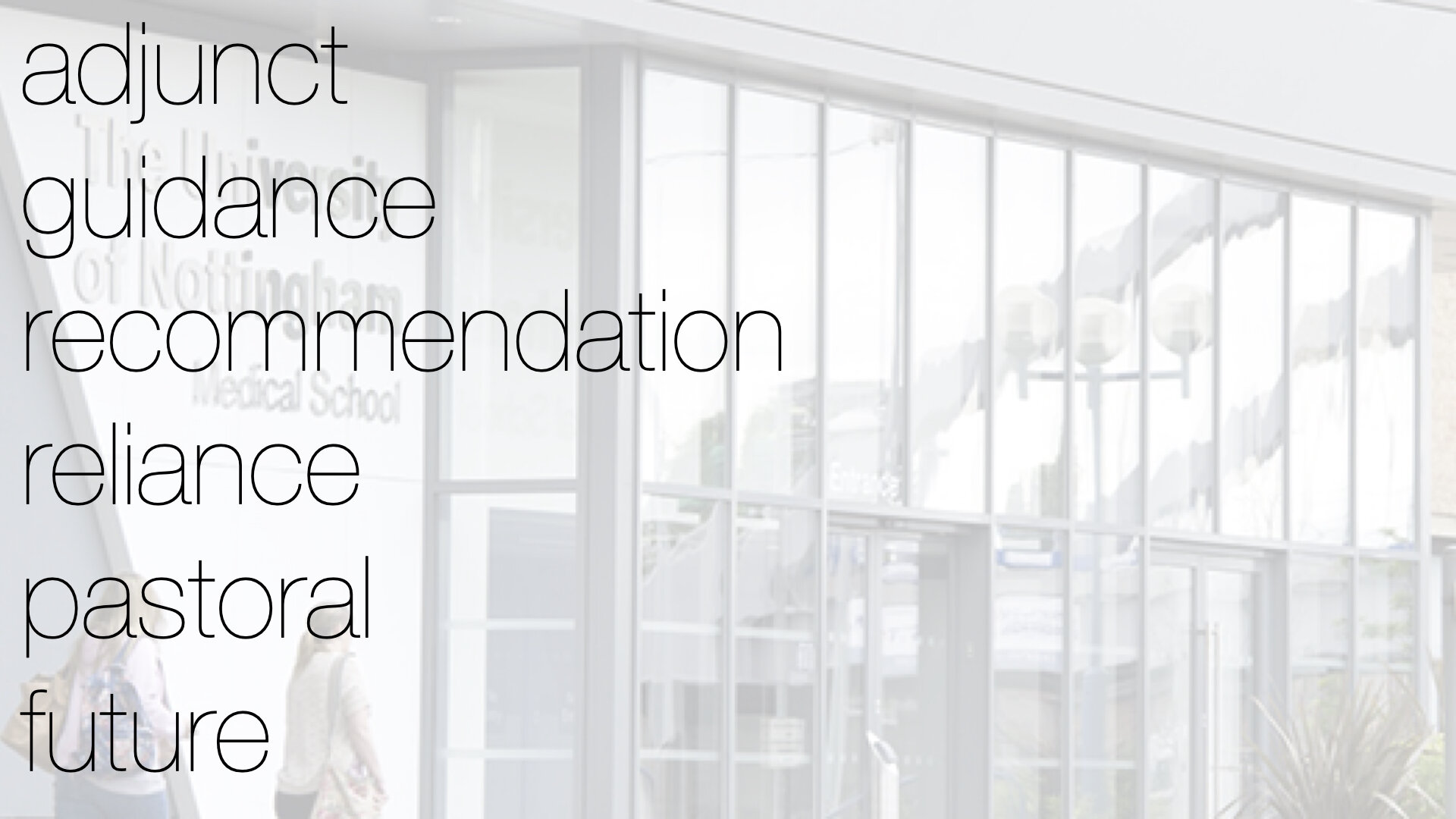

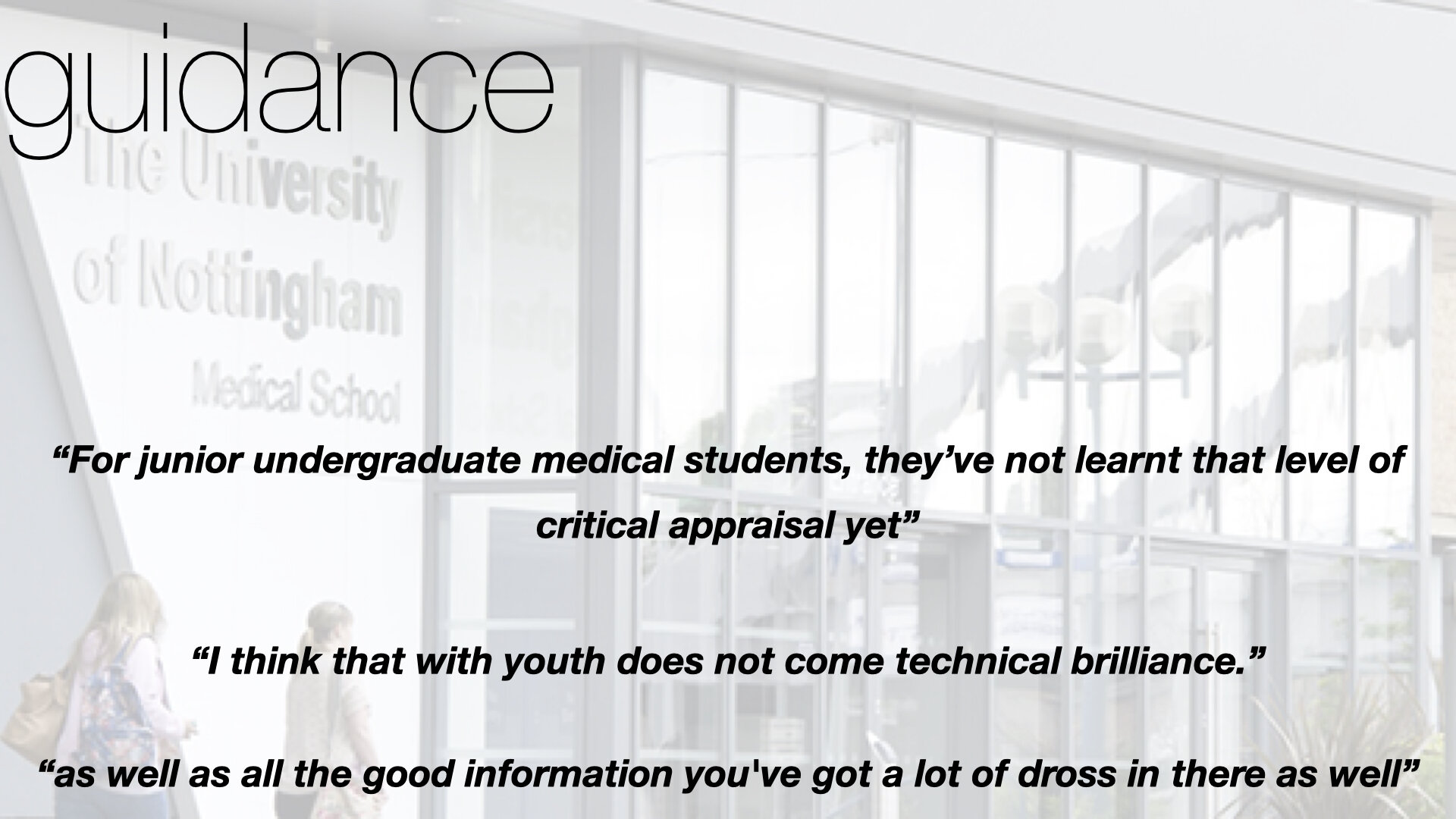
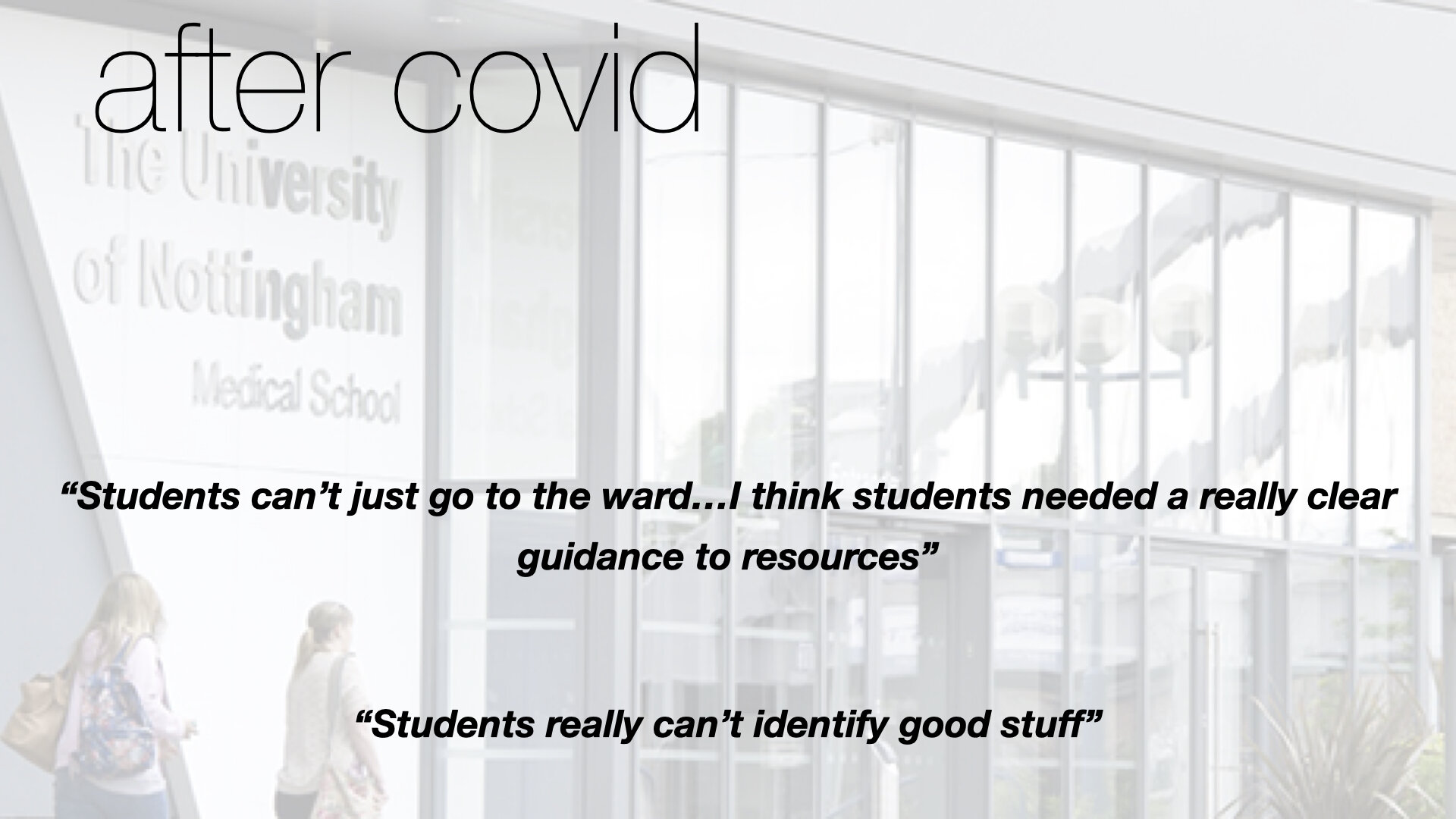
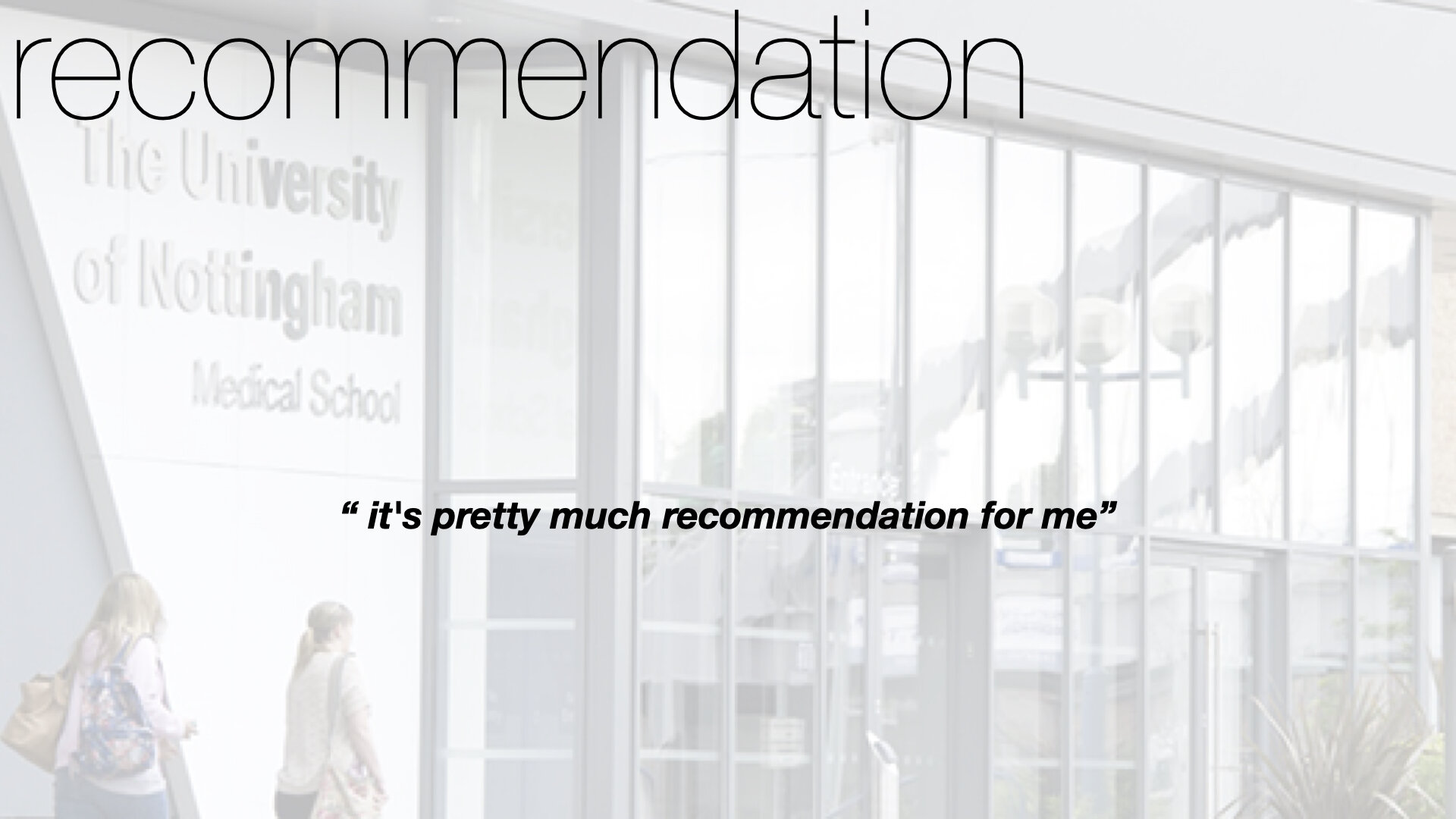

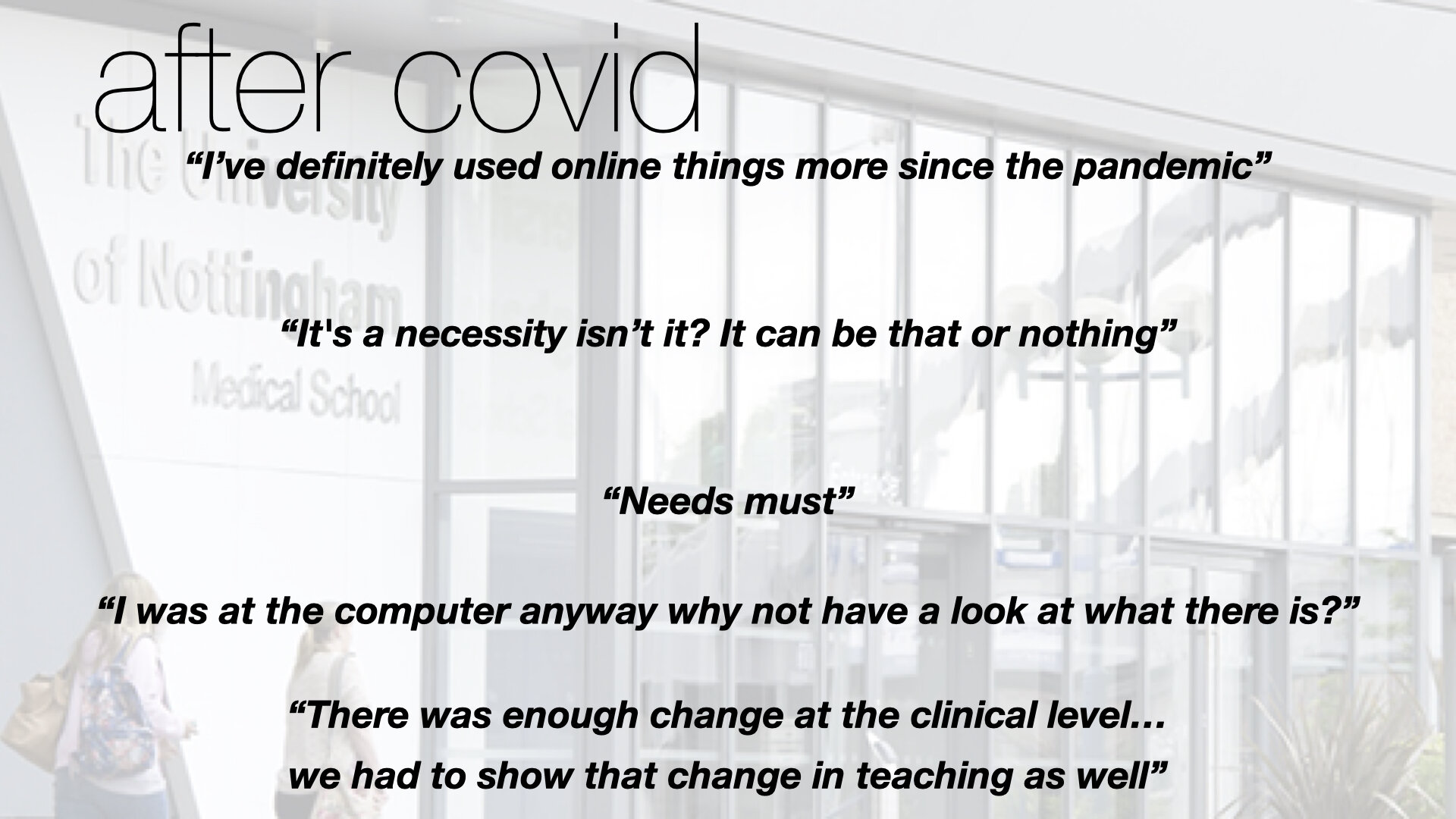
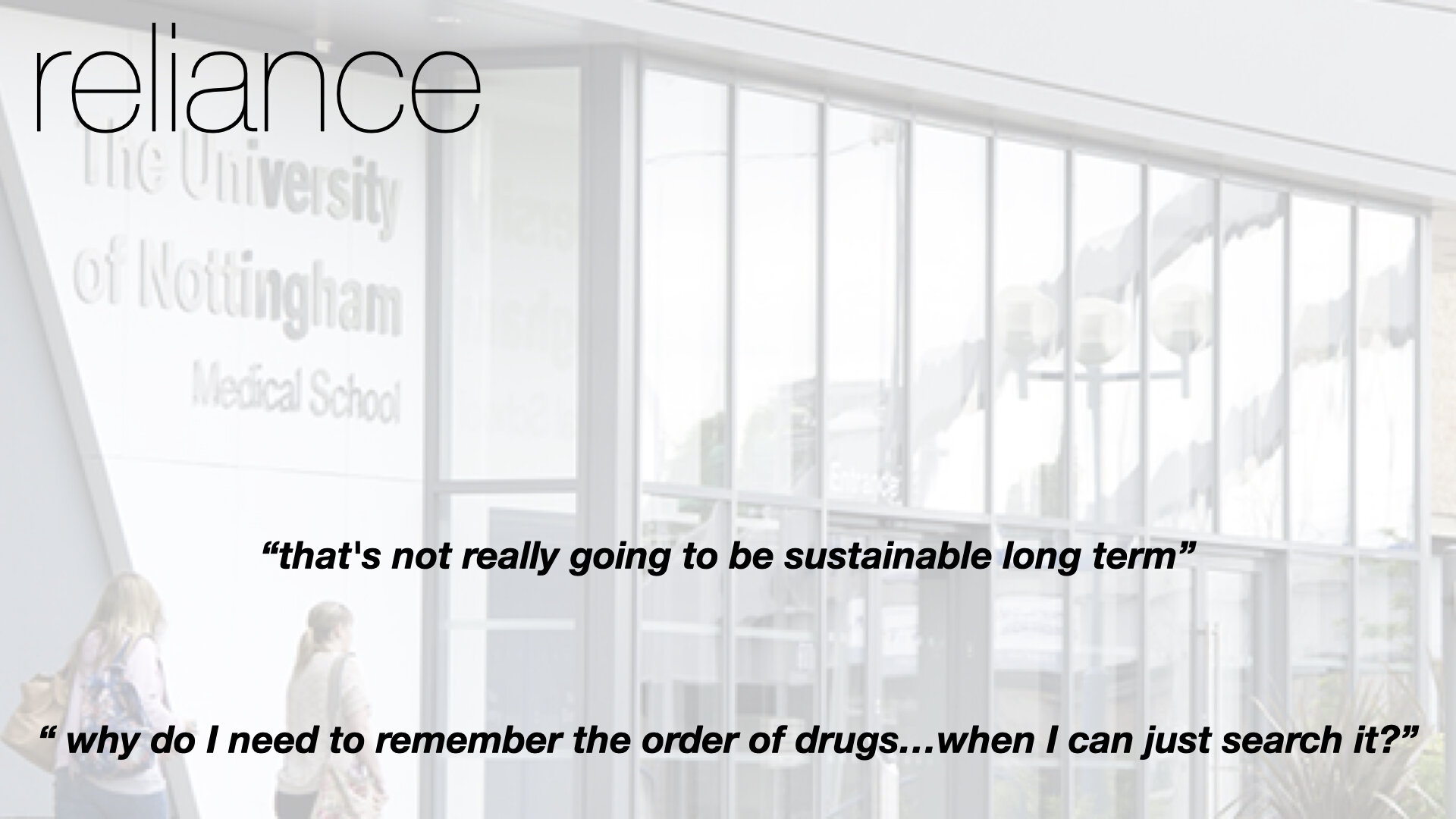
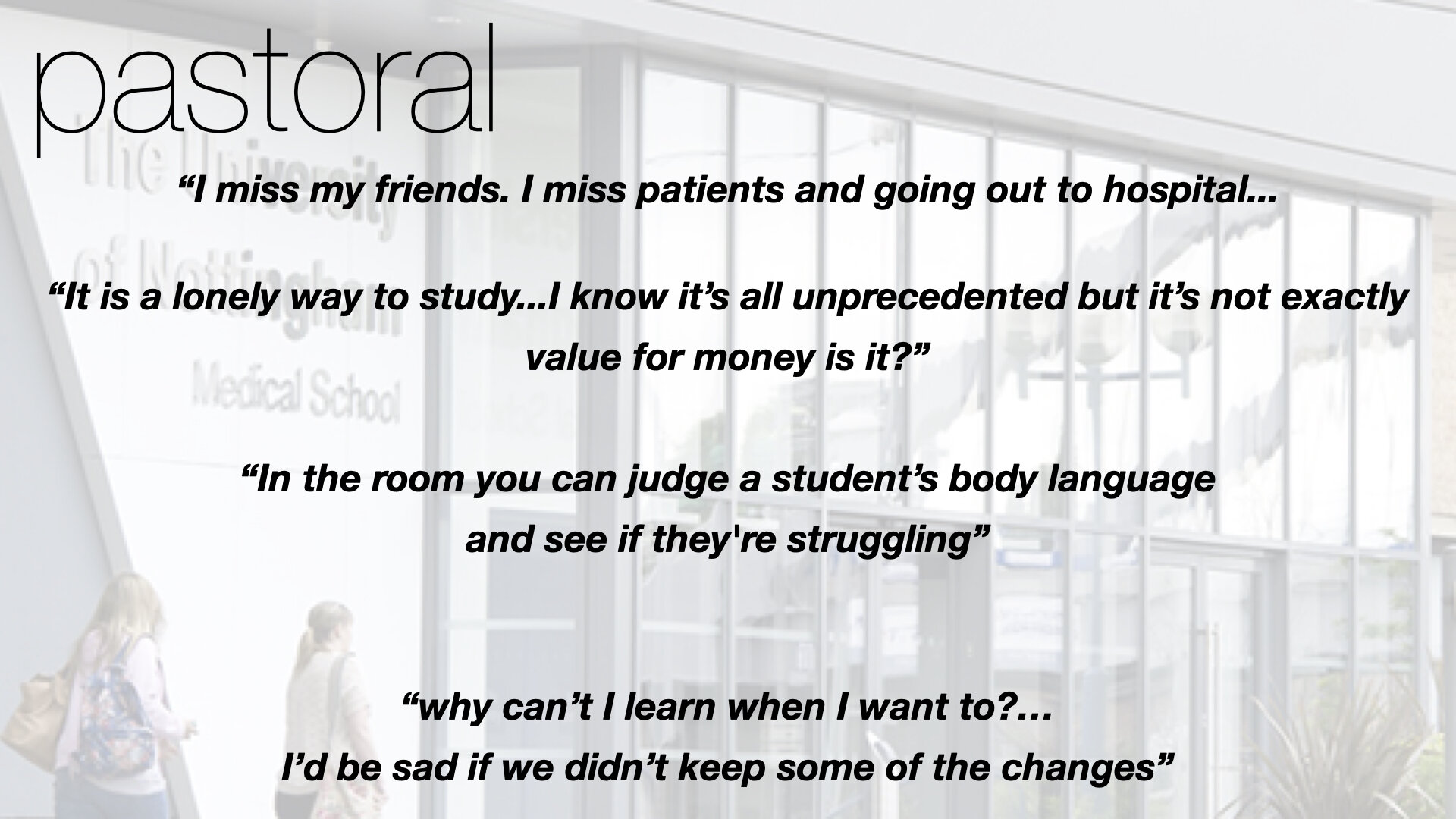


Abstract
As technology has developed so the focus of mobile learning has moved toward collaborative practice. It has been shown that educator attitude and student engagement in the process of developing mobile resources are key to the success of mobile collaboration. Best practice will therefore require an understanding of student and educator perceptions toward mobile learning. Yet research into the perceptions of medical students in the UK towards mobile learning is limited to the evaluation of a specific resource. There has been no study performed in the UK exploring the perceptions of medical educators.
The COVID-19 pandemic was obviously disruptive to medical education yet has been described as a catalyst for transformation which had been “brewing” for a decade1. There was early recognition that moving to virtual education represented an “alternative way of learning”2. The aim of this study was to explore the perceptions of UK medical educators and students towards mobile learning using the University of Nottingham as a case study. Perceptions post-pandemic were compared to those beforehand.
Semi-structured interviews were conducted in 2019 with 9 third-year medical students, 4 clinical teaching fellows with day-to-day teaching duties, and 5 senior medical educators with university roles in curriculum design, e-Learning, and assessment. A further round of semi-structured interviews was conducted in 2020 with 7 third-year medical students, 3 fellows, and 3 senior medical educators. Three of the educators were in both rounds. Following transcription hermeneutic phenomenological analysis was performed for each participant and then each cohort.
Participants in both rounds viewed mobile resources only as an adjunct to traditional teaching. It was suggested as being best used for senior students or in postgraduate education. Educators do not perceive all mobile resources to be of equal value and are particularly mixed regarding social media. Students in the first round were only likely to use resources if recommended by an educator or peer. Students in the second round self-reported an increased motivation to seek out resources for themselves. Educators were only likely to recommend resources they used themselves. It was felt in both rounds that students require guidance on evaluating resources. This need was felt to have increased since the pandemic. Participants were concerned about fostering a reliance on mobile resources but this was felt to be unavoidable in the second round.
References:
1 Lucey CR, Johnston SC. The Transformational Effects of COVID-19 on Medical Education. JAMA. 2020;324(11):1033–1034. doi:10.1001/jama.2020.14136
2 Ahmad Al Samaraee. The impact of the COVID-19 pandemic on medical education. 2020. British Journal of Hospital Medicine. 1-4. 81. 7. 10.12968/hmed.2020.0191.32730144
Background
The Higher Learning Academy (HLA) defines mobile learning as: “the use of mobile devices to enhance personal learning across multiple contexts” (Heacademy.ac.uk, 2018). Technology-enhanced learning (TEL) is an evolving field building from developments within both learning and technology over decades (Conole, 2017; Parson, 2014). Mobile learning has become a key component of this with a number of social and technological phenomena behind its rise (Heacademy.ac.uk, 2018).
One is the increasing access to mobile technology amongst students. Indeed, since 2000 there has been a significant shift in the literature towards appreciating that no understanding of mobile learning would be possible without viewing it through the prism of social and cultural trends (Kukulska-Hulme, Sharples, Milrad, Arnedillo-Sánchez, & Vavoula, 2011). More than 4 billion people, over half the world’s population, now have access to the internet, with two-thirds using a mobile phone; more than half of which are smartphones (McDonald, 2018). By 2020, 66% of new global connections between people will occur via a smartphone (Hollander, 2017).
Another development is what can actually be achieved with that access. We are now in the era of the internet of things (He et al, 2016) such as touchscreen phones and tablets as well as smart wearables such as glasses or watches. Jaldermark et al (2017) therefore described humans as “technology equipped mobile creatures that are using applications, devices, and networks as a platform for enhancing their learning in both formal and informal settings.” They argued further that as society is now heavily characterised by the widespread use of mobile devices and the connectivity they afford there is a need to re-conceptualise the idea of learning in the digital age.
The original version of the Internet (so-called Web 1.0) saw a limited number of resources with most users accessing the Internet to browse (Anderson, 2007). Most text was hypertext (electronically linked non-linear text) with a similar approach to learning as a student would use with a book (Kintsch, 1997). Therefore, the early Internet and its use fitted into previous pedagogy. Subsequent developments have focused on collaboration and the ability to create and edit resources. This is Web 2.0 technology or the ‘participatory web’. Students can now produce resources themselves and share via social media rather than through traditional forms of publication. A prominent example of this is the website ‘Geeky Medics’ created in 2010 by a then medical student as a forum to share notes and learning. By 2018 geekymedics.com had grown with over 50 million visits from more than 150 countries accessing material varying from blogs to videos and a smartphone application (Potter, 2018).
Web 2.0 has been described as “disruptive” (Ntloedibe-Kuswan, 2014) to traditional education. With unprecedented access and resources, mobile learning has been described as ubiquitous learning (Hwang and Tsai, 2011). The opportunities of Web 2.0 resulted in academic interest; the average annual growth rate of biomedical publications related to Web 2.0 since 2002 was 106.3% and by 2015 Web 2.0 was well integrated into the academic field (Boudry, 2015).
The era of smart devices includes the emergence of different touchscreen devices with opportunities for instant social and technological networking independent of time and place. Devices such as small portable laptops, smartphones, tablets, and, more recently, various wearable devices have made up a mobile technological platform enabling an online community for students (Moubarak et al, 2010) The emergence of mobility as an essential aspect of everyday life underlines a need to update the conceptualisations of how we learn (Traxler & Kukulska-Hulme, 2016).
Besides awareness of the rapid technological development, it is also important to understand its impact on the learners' context and how learners communicate with each other (Amara, Macedo, Bendella, & Santos, 2016). As a result, a field of mobile learning has emerged, which focuses on how collaborative learning could be enhanced by applying various mobile technologies (Berge & Muilenburg, 2013; Traxler & Kukulska-Hulme, 2016). As mobile technology has developed toward increasing connectivity so understanding of mobile learning has trended toward a focus on collaboration.
Mobile-computer-supported collaborative learning (mCSCL) describes the deliberate use of mobile resources and technology to collaborate with learning (Sung, Yang, and Lee, 2017). This novel field represents the general trend of mobile learning (Fu and Hwang, 2018). This trend embraces an understanding of how to enhance mobile technologies through collaboration as well as observing and evaluating collaborative learning activities in everyday informal and formal educational settings. (Jaldemark et al., 2017). It also informs understanding of how learning is provided in a society characterised by an emerging digitalisation (Duval, Sharples, & Sutherland, 2017; Traxler & Kukulska-Hulme, 2016).
In Hungary optional (Mesko, Győrffy and Kollár, 2015) and in the USA compulsory (Gomes et al., 2017) courses for medical students on digital literacy and utilising Web 2.0 resources have been developed. The use of mobile resources has been shown in the UK to help with a student’s transition to clinical practice (Dimond et al., 2016) as it reflects current practice.
Despite the benefits and challenges of mobile learning within medical education in the United Kingdom, there are no national guidelines for its implementation or strategic use. Research in the UK focuses on initiating a particular intervention and surveying student opinion (Cole et al., 2017; Pickering and Bickerdike, 2016; Ravindran et al., 2014). Results have been mixed. It has been shown that medical students prefer learning with mobile technology (Davies et al., 2017) and they react positively to mobile learning (Chase et al., 2018). However, in another study when presented with an online course medical students reported a preference for traditional learning (Swinnerton et al., 2016). This reflects the most recent findings of a student survey published by the Higher Education Policy Institute (Neves and Hillman, 2018) suggesting that students prefer traditional contact time over all other learning events. Students nationally report dissatisfaction with current levels of contact time with their educators (Neves and Hillman, 2018).
Students in the UK are conservative in their preferences of learning methods and engagement with them prior to introducing mobile resources is a key step in their success (Davies, Mullan and Feldman, 2018). There is a growing list of case studies of UK universities utilising some form of the student body to consult their opinions prior to introducing mobile learning in the curriculum (Davies, Mullan and Feldman, 2018; Ferrell, Smith and Knight, 2018). Examples of similar student engagement bodies within medical education have been established in the US (Shenson et al., 2015) and Germany (Hempel et al., 2013) but within the UK there is a dearth of work into this area in medical education.
Systematic reviews into Web 2.0 resource use in medical education have shown that educator attitude is also an important step with opportunities to change educator practice (Cheston, Flickinger and Chisolm, 2013; Hollinderbäumer, Hartz & Uckert, 2013). However, whilst there is evidence from Germany of medical educator negativity toward using certain Web 2.0 resources (Volgelsang et al., 2018) there is limited evidence as to the attitude of medical educators in the UK toward Web 2.0 or mobile learning in general. However, it has been suggested they are less likely to engage with mobile resources than their students (Cole et al., 2017).
Literature Review
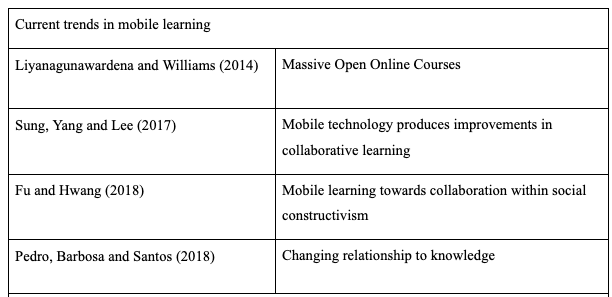
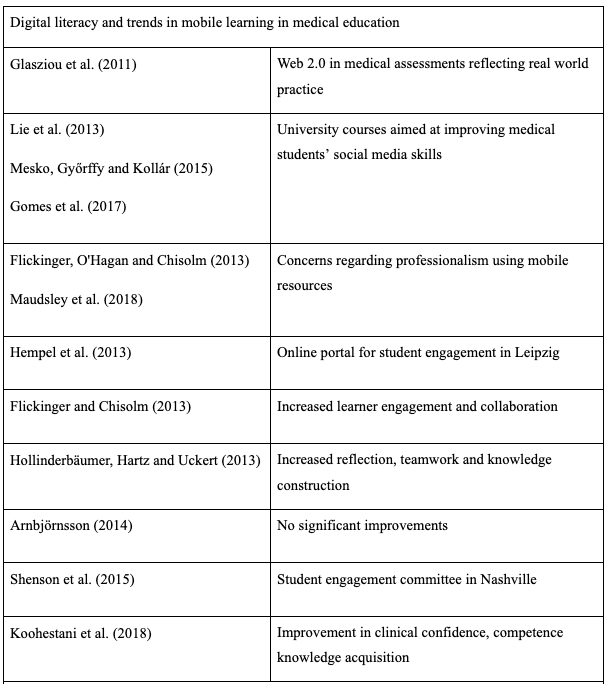
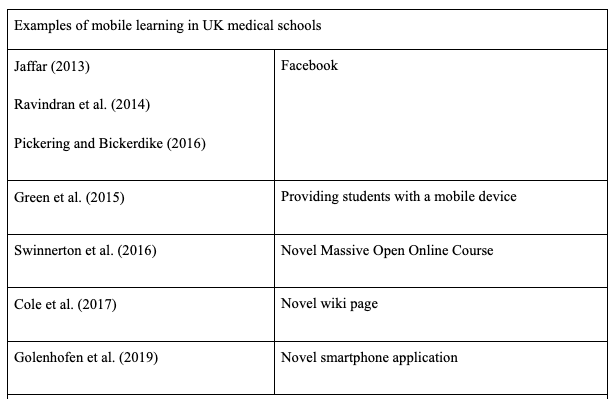



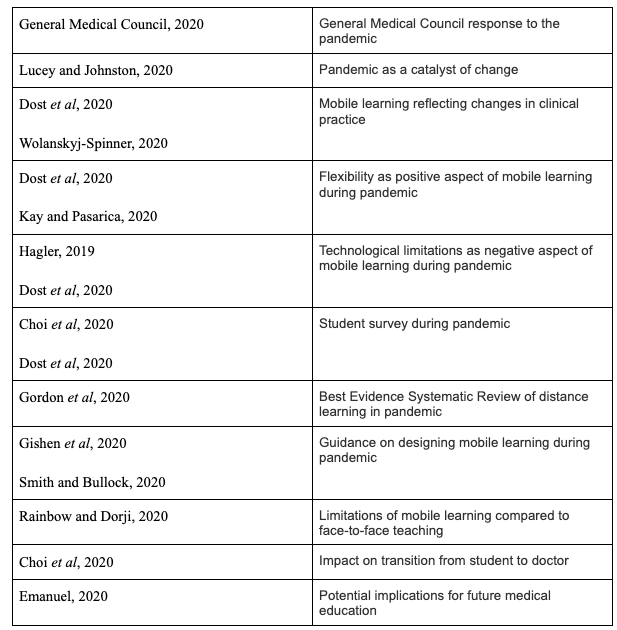
Towards mobile collaborative learning
Since the year 2000 literature exploring mobile learning has increasingly focused on the learning process, the preferences of the learner, and collaboration. Kreijns, Kirschner, and Jochems (2002) proposed that there were five stages to learning through mobile collaboration: copresence, awareness, communication, collaboration, and coordination. They also identified that attempting online collaboration placed pressure on educators to ensure it took place amongst their learners. This observation has continued in the literature and it is well recognised that online collaboration is a phenomenon that does not spontaneously occur amongst learners (Zhao, Sullivan, & Mellenius, 2014). Collaboration is important for building knowledge (Mylläri, Åhlberg, & Dillon, 2010) and finding meaning (Yang, Yeh, & Wong, 2010).
However, the unique features of mobile devices, in particular their portability, social connectivity, and a sense of individuality mean they make online collaboration more likely as opposed to desktop computers that don’t have those features (Chinnery, 2006; Gao, Liu, & Paas, 2016; Lan & Lin, 2016; Song, 2014; Zheng & Yu, 2016). Mobile devices have been credited with making learning movable, real-time, seamless, and collaborative (Kukulska-Hulme, 2009; Wong and Looi, 2011). A meta-analysis of 48 peer-reviewed journal articles and doctoral dissertations from 2000 to 2015 revealed that mobile technology has produced meaningful improvements to collaborative learning (Sung, Yang, and Lee, 2017).
As discussed before the role of mobile learning to foster collaboration between learners has been described as mobile-computer-supported collaborative learning (mCSCL). This distinction arose from developments of mobile technology and how it can be integrated into teaching activities based upon learner cooperation (Zurita & Nussbaum, 2007). This distinction within pedagogy would not have been possible without the empowering nature of mobile devices and resources (Song, 2014).
The majority of literature looking at TEL and mobile learning within medical education focuses on more traditional courses. Analysis of literature pertaining to TEL use within only problem-based learning (PBL) reveals similar strengths to traditional courses; accessing information, collaboration and reflection, and weaknesses; infrastructure demand and the need for teacher and staff engagement (Cheston, Flickinger and Chisolm, 2013) (Jin and Bridges, 2014). Meta-analysis of the literature on mobile learning in PBL found that problem-solving is one of the major cognitive skills emphasised and that device and implementation aspects are the main limitations to mobile learning use in PBL (Ismail et al., 2016).
Digital literacy and Medicine
Health Education England (HEE) defines digital literacy as, “those capabilities that fit someone for living, learning, working, participating and thriving in a digital society" (Health Education England, 2018). In announcing their Building a Digital Ready Workforce programme HEE argued that, “every single organisation in health and social care has a duty for the learning and development of its own staff and we believe that digital skills and knowledge should be a core component of this.” It’s been argued that social media helps to provide patient education and so introducing students to social media helps to prepare them for “the world of empowered patients” (Mesko, Győrffy, and Kollár, 2015) as well as reflecting an adaptable curriculum (Gomes et al., 2017). Professional courses focussing on medical students’ use of social media have been shown to foster continued self-monitoring (Lie et al., 2013). One example from Hungary was an elective course for students designed to support online behaviour and information management with a special emphasis on social media (Mesko, Győrffy, and Kollár, 2015). A similar compulsory course has been designed in the United States for first-year medical students based on student usage of social media with discussion with peers and educators (Gomes et al., 2017). Whilst the course in Hungary focussed on efficient use of mobile resources the US course prioritised students’ professionalism and use of social media to aid their careers. Both reported positive outcomes. In the UK a Digital Literacies course was introduced into the medical curriculum at Imperial College London starting in the first year and extending longitudinally throughout the course. It is claimed that this course, “looks to the future impacts of digital technologies on the medical profession” (Digitalstudent.jiscinvolve.org, 2014). However, unlike the US and Hungary courses, no publication has resulted from the UK course.
Another aspect interlinked with these social and technological changes has been the shortening of the half-life of knowledge. In 2008 half of all knowledge learned on a university degree was obsolete within 2 years (Tucker, 2008). By 2017 the half-life of medical knowledge was estimated at 18-24 months. It is estimated that by 2021 it will be only 73 days (Colacino, 2017). It’s been argued that with increasing in situ mobile access learners increasingly perceive knowledge as disposable and ephemeral (Pedro, Barbosa, and Santos, 2018). The use of Web 2.0 as part of open-book assessments has been suggested as a potential development in medical education in order to reflect real-world practices and to develop digital literacy (Glasziou et al., 2011).
A Best Evidence Medical Education review of 49 abstracts on mobile learning for health profession students on clinical placement showed powerful education support, especially with transitions from student to professional reflecting the demand for digital literacy within Medicine. However, there were concerns especially with professionalism, confidentiality, mixed messages, and distractions when using mobile resources (Maudsley et al., 2018). This theme regarding professionalism was reflected in other studies (Flickinger, O'Hagan, and Chisolm, 2015)
Student perceptions of mobile resources
The term ‘digital natives’ coined by Prensky (2001) describes students for whom technology has been an indelible part of their development and education. This led to debate regarding how digital nativism might shape education and the potential differences between those who have been born into technology and those who have adapted to it; termed digital immigrants. However, the latest evidence suggests that this distinction is not as clear as at first believed and this presumption of digital literacy based on youth might hamper education (Kirschner and De Bruyckere, 2017). An Introduction to e-Learning course delivered to undergraduate students in Australia suggested that ‘digital natives’ are not familiar with education technologies and need to be made aware of and explicitly taught about them (Ng, 2012) whilst subjects aged over 50 can adapt to an unfamiliar mobile resource (Scheibe et al., 2015). It has been recently shown that students can be taught through learning tasks to improve how they process digital learning resources (Greene et al., 2018). Through teaching sessions, the digital literacy of digital natives can be improved (Ng, 2012). Mobile learning can positively affect students’ learning in all three domains of Bloom’s taxonomy (Koohestani et al., 2018).
A common theme across the literature regarding student perceptions towards mobile learning is the research design of implementing a mobile resource and then evaluating perceptions. For example, in one particular study exploring UK students’ attitudes towards mobile learning (Green et al., 2015) it was suggested that mobile learning enhanced education. However, this study, whilst focusing on student preferences and barriers to usage, also surveyed students following implementing a specific intervention, in this case providing students with a mobile device with tailored resources. For the purposes of this study, this made it hard to specifically find literature exploring student attitudes towards mobile learning recorded in isolation. Therefore, the conclusions of the literature were reviewed but I was mindful these were conclusions following a specific intervention.
Various interventions are being used in the literature. Facebook in particular is being increasingly used in medical education as it offers forum and messaging services (Pickering and Bickerdike, 2016, Jaffar, 2013, Ravindran et al., 2014). Another option is the creation of novel mobile learning resources such as a Wiki platform created for first-year medical student case-based discussion at Cardiff Medical School (Cole et al., 2017). A MOOC has been used at Leeds Medical School to support first-year medical students with their anatomy teaching (Swinnerton et al., 2016). Novel applications have been designed and used to supplement traditional teaching (Golenhofen et al., 2019).
In a systematic review of published literature on social media use in medical education Cheston, Flickinger, and Chisolm (2013) found an association with improving knowledge, attitudes, and skills. The most often reported benefits were in learner engagement, feedback, collaboration, and professional development. The most commonly cited challenges were technical difficulties, unpredictable learner participation, and privacy/security concerns. A systematic review from the same year reported a dominance of literature from the US and Great Britain. (Hollinderbäumer, Hartz and Uckert 2013). It suggested that learning through Web 2.0 was a form of self-deterministic learning and increases reflection, knowledge construction, and teamwork. A year later however Arnbjörnsson (2014) reviewed only publications that included randomisation, reviews, and meta-analyses and concluded that despite the wide use of social media no studies reported significant improvements in the learning process and that some novel mobile learning resources don’t result in better student outcomes.
All of these systematic reviews were limited in the available literature with only 14 studies (Cheston, Flickinger and Chisolm, 2013), 20 studies (Hollinderbäumer, Hartz and Uckert 2013) and 25 studies (Arnbjörnsson, 2014) reviewed. A later systematic review of 21 studies from 2007 to 2017 (Koohestani et al., 2018) showed three themes: improvement in student clinical confidence and competence, improvements in the acquisition and enhancing theoretical knowledge, and positive attitudes of students toward mobile learning. However, only one of those studies was conducted in the United Kingdom. This was a study comparing student use of a mobile drug calculator to using the British National Formulary for Children (BNFC). Utilising the smartphone was significantly more accurate and faster and increased prescriber confidence. Medical students using the smartphone outperformed consultant paediatricians using the BNFC (Flannigan and McAloon, 2011).
Students quickly adapt their usage of Web 2.0 resources to fit a preferred way of working (Cole et al., 2017, Ng, 2012). Female students seem more likely to approach online learning in a more personalised manner (Swinnerton et al., 2016). Using a familiar social media platform helps increase confidence and decrease anxiety (Pickering and Bickerdike, 2016). Whilst it’s been suggested male students may be less likely to ask questions via a Web 2.0 resource (Pickering and Bickerdike, 2016) students overall seem to find these a safe environment and feel more comfortable asking questions than in a clinical area (Ravindran et al., 2014). There is evidence that certain learning resources are more readily engaged with than others with Swinnerton et al., 2016 reporting greater student appreciation toward videos and quizzes than discussion fora.
There has been some discussion that students are intrinsically motivated by mobile learning due to their experience of mobile devices (Laurillard, 2007 and Roblyer and Doering, 2010). Arnbjörnsson (2014) linked student usage of mobile resources to intrinsic motivation; the higher-achieving the student the more motivated they were and so the more likely they are to use a mobile resource.
A recent review of literature pertaining to mobile learning use in medical education suggests that it remains a supplement only. There still is not a consensus on the most efficient use of mobile learning resources in medical education but the ever-changing nature of resources means this is probably inevitable (Klímová, 2018).
It’s been suggested that while mobile learning offers incredible opportunities, it requires students to be motivated and able to self-regulate their learning (Sha, Looi, Chen, and Zhang, 2012). Terras & Ramsay, (2012) identified a number of psychological challenges for students using mobile learning including oversight of students and the management of information which often comes at disparate moments. Greene, Yu, and Copeland, (2014) suggested that effective digital literacy relies upon a student being able to effectively plan and monitor their own strategies as well as vetting material found. Medical students themselves report concerns regarding privacy and professional behaviour when using social media in education (Flickinger, O'Hagan, and Chisolm, 2015).
The most recent student survey by The Higher Education Policy Institute (HEPI) found that students prefer direct contact time with educators over other learning events. 44% of students rating their course as poor or very poor value for money included a lack of contact hours as part of their complaint. More students (19%) were dissatisfied with their contact time than neutral (17%) and had increased in the previous year. However, the survey did not explore mobile resources either as a contact time alternative or how students viewed their educators creating resources for them. (Neves and Hillman, 2018).
Teachers and Institutions
Whilst evidence points to mobile learning being enjoyable and increasing student engagement (Heath et al, 2018) it is shown that technology-based courses with a low sense of human feedback and collaboration will suffer the highest rates of student attrition (McInnery, 2018). Students in the UK are conservative in their preferences of learning methods and their university engaging with them prior to introducing mobile resources is a key step in the successful use of that resource. It, therefore, takes time for any novel teaching practice to become embedded with students needing to experience and reflect on their overall learning practice (Davies, Mullan, and Feldman, 2018).
Case studies in the UK show that the success of mobile learning in higher education has involved some degree of student inclusion alongside educators during design (Ferrell, Smith and Knight, 2018). No evidence of medical student inclusion during mobile resource design in the UK was found in the literature. One example was published from Vanderbilt University, Nashville; a committee formed of administrators, educators, and selectively recruited students. This committee serves four functions: to liaise between students and administration; advising the development of institutional educational technologies; developing, piloting, and assessing new student-led educational technologies; and promoting biomedical and educational informatics within the school community. The authors report benefits from rapid improvements to educational technologies that meet students’ needs and enhance learning opportunities as well as fostering a campus culture of awareness and innovation in informatics and medical education (Shenson et al., 2015).
An example from a European medical school was found in the Faculty of Medicine of Universität Leipzig, Germany. Rather than a physical committee their E-learning and New Media Working Group established an online portal for discussion with students over mobile resources as well as expanding the university’s presence across social media to help disseminate information (Hempel et al., 2013).
HEPI has recently made seven recommendations for successful provision of mobile learning at UK universities which include building technology into curriculum design and for a nationwide evidence and knowledge base to be developed on what works (Davies, Mullan and Feldman, 2018).
In 2017 the UK government established the Teaching Excellence Framework since renamed the Teaching Excellence and Student Outcome Framework (TEF), as a national exercise to assess the quality of higher education (Officeforstudents.org.uk, 2019). This assessment is based on student feedback, outcomes, and drop-out rates. The TEF results in an institute being awarded a gold, silver, or bronze award. HEPI argued that “Digital technology should be recognised as a key tool for higher education institutions responding to the TEF. Providers should be expected to include information on how they are improving teaching through the use of digital technology in their submissions to the TEF” (Davies, Mullan, and Feldman, 2018).
Both Cheston, Flickinger, and Chisolm, (2013) and Hollinderbäumer, Hartz and Uckert, (2013) suggested during their conclusions that Web 2.0 offered opportunities for educator innovation. However, it has been shown that teachers may be less engaged than their students in utilising Web 2.0 resources especially in accessing materials outside of the classroom (Cole et al., 2017).
Both students and teachers need to be trained prior to using Web 2.0 resources (Cole et al., 2017). Teachers’ attitudes toward and ability with mobile resources are a major influence on students (Kuo, 2005; Demb, Erickson & Hawkins-Wilding, 2004 and MacCallum and Jeffrey, 2009). Students’ fear of patient and teacher perception is reported as a barrier to using mobile resources but these fears may be due to hearsay rather than actually experience (Davies et al., 2012).
No literature exploring the perceptions of UK medical educators toward mobile learning was found. However, a recent online survey of 284 medical educators in Germany did show some interesting findings. Respondents valued interactive patient cases, podcasts, and subject-specific apps as the more constructive teaching tools while Facebook and Twitter were considered unsuitable as platforms for medical education. There was no relationship found between an educator’s demographics and their use of mobile learning resources (Volgelsang et al., 2018).
COVID-19 pandemic and mobile learning
Due to concerns regarding student safety, the COVID-19 pandemic saw a switch away from face-to-face teaching and clinical experience to mobile learning. This was obviously disruptive to medical education yet has been described as a catalyst for transformation which had been “brewing” for a decade (Lucey and Johnston, 2020).
In a cross-sectional, online national survey of medical students across 39 medical schools, respondents reported a 300% increase in the amount of time spent on online platforms following the pandemic. Flexibility was deemed to be the greatest perceived benefit whilst distractions from family and poor internet connection were the greatest downsides. Further incorporation of mobile learning with traditional methods of teaching was recommended, particularly focused on problem-based learning and teamwork. It was also felt that a move towards mobile learning would reflect the move towards remote clinical consultations as well (Dost et al, 2020). The positive aspect of flexibility, especially in students being able to learn in their own time, has been reported in other studies (Kay and Pasarica, 2020) as has the negative impact of technological limitations (Hagler, 2019). Concerns regarding the relevance of online medical education have stated that sessions simulating virtual consultations should be used (Wolanskyj-Spinner, 2020).
In the UK the General Medical Council (GMC) sped up the processing of final-year medical students’ applications for professional registration (General Medical Council, 2020). In another online survey of final-year medical students across 33 medical schools respondents felt that while changes to their curricula had been necessary, it had adversely affected their transition from student to doctor with regard to losing their clinical assistantships. Yet students still felt confident about going into their Foundation Year One (Choi et al, 2020). Concerns have been raised about how to meet students’ mental health needs remotely. (Rainbow and Dorji, 2020).
While it’s been argued that remote learning cannot replace face-to-face teaching in medical education it has proven to be a flexible and inexpensive way of delivering core content (Rainbow and Dorji, 2020). A Best Evidence in Medical Education systematic review found that adoption of remote learning had been rapid in many countries as a “new norm” at many levels but that evaluation had been “limited” (Gordon et al, 2020). Online sessions need to be planned in a similar way to face-to-face teaching (Smith and Bullock, 2020) and tailored to students’ levels of experience (Gishen et al, 2020). It’s also been argued that thanks to the pandemic, “tomorrow’s trainers” will have experienced the “reimagining” of medical education (Emanuel, 2020).
In summary, the trend of mobile learning is towards increasing collaboration. Digital literacy is a key skill within Medicine with some suggestions in the literature of an online community of practice being formed. Several medical schools are implementing modules to prepare their students for working in this new digital literate environment. Mobile learning has been suggested as working optimally in a flipped classroom blended learning approach. Evidence of students’ perceptions of mobile learning focuses on the evaluation of a specific resource or intervention rather than in isolation as a concept. However, there is growing evidence that student engagement early on in the design of a resource leads to better engagement with the resource once developed and released. Whilst there are examples of these groups in non-medical UK faculties as well as at medical schools in the US and Europe there is no evidence of an equivalent at a UK medical school. Educators are a major factor in students adopting a mobile resource. However, there is limited evidence of medical educator perceptions toward mobile learning and none from the UK.
The COVID-19 pandemic has been called a ‘catalyst’ for transformation and has seen students change their use of online resources. Concerns remain regarding the limitations of mobile learning which include technological and pastoral elements. Yet there is an argument that the changes reflect those seen in clinical practice and could affect the future of medical education.
The purpose of this phenomenological study was to explore how medical students and educators perceive mobile learning. Current literature is void of evidence regarding medical student perceptions toward mobile learning in isolation rather than related to a specific resource and its evaluation. Another void in the research concerns the perceptions of medical educators toward mobile learning. The voices of medical students and educators were at the core of this study as their lived experiences shed light on their perception of the phenomenon of mobile learning. A qualitative strategy was chosen to help navigate the investigatory process.
Phenomenology
Phenomenology is a key interpretivist and anti-positivist branch of social science research. Phenomenology has its roots in philosophy and is interested in the analysis and descriptive experience of phenomena by individuals in their everyday world; what is called their ‘lifeworld’ (Creswell, 2013). Therefore, the interest is in the real-world experience of an individual and not why it is that way. Any human experience is worth studying as phenomenologists perceive the human experience of the everyday world as a valid method of inquiry. This means that phenomenological research differs from other forms of qualitative research as it attempts to understand a particular phenomenon from the points of view of the participants who have experienced it (Christensen, Johnson, and Turner, 2010). The phenomenon in question for this study is mobile learning in medical education.
A phenomenological inquiry is “an attempt to deal with inner experiences unprobed in everyday life” (Merriam, 2002). Therefore a phenomenological method was chosen to help identify meaning behind the human experience as it related to a phenomenon or notable collective occurrence (Cresswell, 2009). The phenomenon of interest was how medical students and educators experience and perceive mobile learning in medical education.
Phenomenology is used extensively in research in the fields of sociology, psychology, health sciences, and education (Cresswell, 1998). This methodology was chosen to show “how complex meanings are built out of simple units of direct experience” (Merriam, 2002) and how “general or universal meanings are derived” from lived experience (Cresswell, 1998). After a phenomenological approach was deemed appropriate for this study its design was based on Moustakas (1994).
Moustakas described the steps in phenomenological analysis (Moustakas, 1994). First, he recommends giving each statement in the transcript equal weighting and value. This is part of the epoch process. Statements referring to the phenomenon in question are to be lifted out of the transcription and onto a separate sheet. These are the horizons of the transcription. This process is known as horizontalisation. Once the horizons for each participant are lifted the process of reduction and elimination can begin. Moustakas recommends two questions when analysing the horizons (Moustakas, 1994):
Does it contain a moment of the experience that is a necessary and sufficient constituent for understanding it?
Is it possible to abstract and label it?
Only if the answer to these questions is yes can the statement be labelled as an ‘invariant constituent’ of the experience and move on for further analysis by clustering and thematising the invariant constituents. These clustered themes allow textual descriptions to be constructed for each participant which then allows composite descriptions to be created for each category of participant.
The potential impact of the researcher on the participants’ responses as well as analysis is well established Creswell (2013). Reflexivity is an attitude of attending systematically to the context of knowledge construction, especially to the effect of the researcher, at every step of the research process so as to avoid bias and skewing analysis. It’s been recommended that during phenomenological study the researcher should employ regular breaks of time and place from the data as well as reflecting on their own emotions during analysis (Clancy, 2013). Breaks were taken before and after each stage of the phenomenological process so the researcher could encounter the data anew as much as possible.
As this study was not interested in generating theory the grounded theory approach was not considered appropriate. Grounded theory also requires multiple cycles which would not fit with this study’s time frame. This study was not attempting to create a consensus nor only consider the thoughts of experts and so the Delphi model was not selected. The mixed-methods approach was considered but early on it was felt any form of quantitative analysis would not offer any benefit compared to interviewing alone.
Phenomenological Case Study
Phenomenologists aim to examine the lived experiences of a particular group of people to best capture and describe their perceived realities within a certain context (Moustakas, 1994). Phenomenological research allows understanding of the essence of a human experience in order to gain a rich understanding of a particular experience from the perspective of the participant(s). These participants’ personal, firsthand knowledge provides descriptive data which provides the researcher a firmer understanding of the “lived experience” for a particular event (Patton, 2002). This phenomenological approach, used with the case study method, allows researchers to understand and/or make sense of intricate human experiences and “the essence and the underlying structure of a phenomenon” (Merriam, 2009).
Case studies are “anchored in real-life situations,” and they result in “…a rich and holistic account” of a particular phenomenon (Merriam, 2009). This design allows researchers to gain a more in-depth understanding of participants’ total experiences. Unlike quantitative analysis, where patterns in data are examined on a large scale, case studies allow researchers to observe and analyse data on a much smaller, intimate level. Utilising the case study design allows researchers to examine a given uniqueness in order to reveal a phenomenon that otherwise may not be accessible (Merriam, 2009). The researcher is able to come to understand the phenomenon through the participants’ descriptions of their lived experiences as well as search for the cruxes of those experiences (Moustakas, 1994). The results of case studies facilitate an understanding of real-life complexities that directly relate to readers’ routine, ordinary experiences.
Study Design
This was a qualitative study, which intended to explore the lived experiences of medical students and medical educators of mobile learning through phenomenological inquiry. Medical students and educators at the University of Nottingham were selected as a case study. Whilst case studies are often inextricably linked to a particular setting, sometimes the sample of data itself is the unit of interest with the location acting as a backcloth to the collection of data (Bryman, 2012). With a case study the case is an object of interest in its own right and the researcher aims to provide an in-depth examination of it.
This was felt to be a representative case. Representative cases are not extreme or unusual in any way but instead provide a suitable context for research questions to be answered (Bryman, 2012). They “capture the circumstances and conditions of an everyday or commonplace situation” (Yin, 2009). To this end, medical students and educators at the University of Nottingham were felt to be a representative case to explore the perceptions of mobile learning in medical education. A single case cannot be extrapolated to generalise across other settings; the limit of external validity is well known in case studies. Therefore, the key point is not whether a single case can be generalised but the extent to which the researcher generates conclusions from the data (Yin, 2009). In that regard, there is an inductive process to interpreting a case study with the opportunity to both generate and test theories (Bryman, 2012).
Setting
This study was conducted at the Medical School of the University of Nottingham, a Russell Group member since 1994. As of August 2018, the Medical School is ranked 23rd out of 33 in the Complete Universities Guide ranking of UK Medical Schools (Bhardwa, 2017). At the time of the study, the main undergraduate course lasts 5 years with 2 years of pre-clinical study before undertaking a bachelor’s dissertation. Following this undergraduate students start Clinical Phase 1 (CP1) in the latter half of their third year. They are joined by Graduate Entry Medicine (GEM) students whose course consists of one and a half years of PBL pre-clinical study before they enter CP1 and continue the clinical stage with the undergraduate students. CP1 consists of 14 weeks with 7 spent in Medicine and 7 in General Surgery. Students are sited in hospitals across the East Midlands Deanery for CP1. This study was sited at one of these hospitals, the Queens Medical Centre (QMC) in Nottingham.
Participants and recruitment
Participants were purposively sampled for relevance to the research question. There were three participant groups.
Medical students placed at the QMC were approached at the beginning of their CP1 attachment with a verbal presentation by the author during their induction sessions. An invitation was sent via email to students after the halfway point of the CP1 attachment including a description of the study. Students who replied were placed into focus groups with a suitable date and time for the interview to take place. It was felt their perspectives at that stage of the course would offer relevant insight as to the most junior group on a clinical attachment with recent experience of the pre-clinical years.
All medical educators employed by the University of Nottingham as Clinical Teaching Fellows at the QMC were sent an invitation via email along with a description of the study. Those who replied were offered a suitable date and time for the interview to take place. It was felt they would offer an experience of day to day teaching and the related practicalities and methods.
Senior medical educators were purposively sampled due to their experience in assessment, e-Learning, curriculum design and the regulatory requirements of the GMC. A senior medical educator was defined as anyone employed by the University of Nottingham Medical School in a director or lead capacity. Those purposively sampled were sent an invitation via email along with a description of the study. Those who replied were offered a suitable date and time for the interview to take place. Engagement with the project was voluntary for all and participants had the option to withdraw at any time.
As medical educator recruitment became an issue for this study it was felt prudent to keep to the individual interview model for these subjects. Literature detailing medical educator perceptions of mobile learning is particularly sparse as discussed earlier and it was felt an individual interview model would allow more exploration of each subject’s lived experience. There was also a concern to avoid any professional friction or seniority hierarchy which may have resulted from a focus group of educators. Finally, it was also felt that the teaching ethos of an individual educator is a personal matter. Peer discussion in a focus group may coerce members to offer views they feel cultural appropriate (Bryman, 2012) and not their actual views. An individual educator’s perception of teaching was therefore felt to be better explored in an anonymous interview.
Data collection
Data collection was through focus groups of students and interviews with educators. During the initial stages of this project, it was intended to perform interviews with both groups of participants. However, following the recommendations in the literature of student bodies becoming involved in the formation of mobile resources it was felt to be sensible to seek the perceptions of focus groups of students. Focus groups allow researchers to study the ways a particular group makes sense of a phenomenon especially if members of the group probe and challenge each other’s opinions (Bryman, 2012). Focus groups also relinquish a degree of control from the interviewer to the group, allowing them to set the agenda to some extent with regard to priorities. This was also felt to give a realistic representation of the recommended medical student groups.
Interviews were conducted in various sites at the Queens Medical Centre between May and June 2018 in the first round and between May and June 2021 in the second. In the first round, the following interviews were held:
Two student focus groups comprising of 9 third-year medical students in total. 4 medical educators and 5 senior medical educators were interviewed individually.
In the second round, the following interviews were held:
Two student focus groups comprising of 7 third-year medical students in total. 3 medical educators and 3 senior medical educators were interviewed individually. The three senior educators had been interviewed in the first round as well.
Although the interviews were anonymous participants' basic demographics were recorded (gender, age and whether they had received education outside of the UK). Both focus groups lasted 60-70 minutes with each educator interview lasting up to 40 minutes and were conducted by the author using Bevan’s format. Interviews were semi-structured using a question guide based on contextualising, apprehending and clarifying the phenomenon of mobile learning.
Interviews were digitally recorded, anonymised and transcribed verbatim. Audio recordings of interviews and transcripts, once produced, were securely stored on an encrypted USB drive. No interview was rejected.
It’s been argued that any form of interviewing develops a structure regardless of intent and to allege otherwise is not accurate (Mason, 2002). Therefore a semi-structured questioning style was decided upon ensuring that key themes were explored with the opportunity for elaboration and deviation as necessary. The right questioning format had to be defined early on.
Any interview format in phenomenological research must be kept practical (Bevan, 2014). A suggested format for semi-structured interviewing is based on key concepts within phenomenology: the participant’s description of the phenomenon, their natural attitude and their lifeworld view, the modes of the phenomenon appearing in day to day life, reduction and imaginative variance (Bevan, 2014). These key concepts are divided into three domains of questioning, contextualisation, apprehending the phenomenon and clarifying the phenomenon (Bevan, 2014).
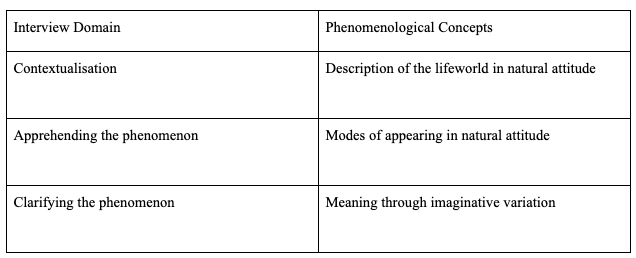
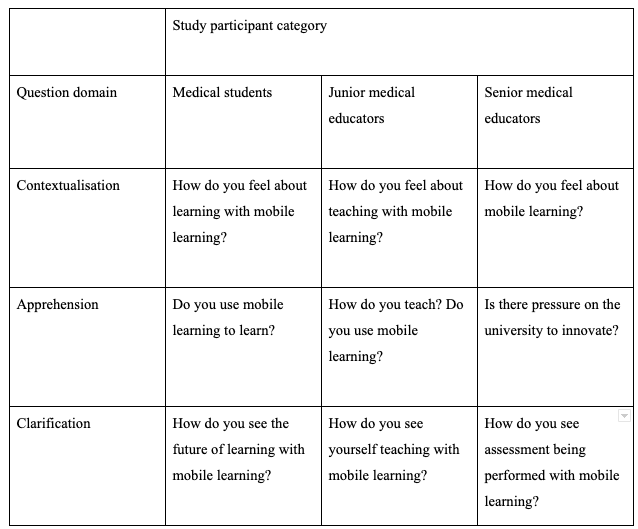
Question selection
Through contextualisation the participant reconstructs and describes their experience in a form of narrative. It is possible to ask for descriptions of places or events, actions and activities (Spradley, 1979). This method fits with previously established processes such as Giorgi’s description and interview (Giorgi, 1989) and Seidman’s focused life history (Seidman, 2006).
Apprehending the phenomenon focuses attention on the experience in question. As Bevan argues, different people will experience the same phenomenon in different ways and the interviewer cannot predict how they will choose to express themselves. Therefore descriptive questions should be supplemented with more structured questions to add depth and quality to the information gathered (Spradley, 1979).
Clarification of the phenomenon is through imaginative variation. Usually, imaginative variation is a core part of phenomenological analysis as described by Husserl (Husserl, 1970) and Heidegger (Heidegger, 1962) to imaginatively vary the elements of an experience to clarify it (Husserl, 1960) rather than the interview process. Bevan argues that by including it during the interview process we can add clarity by explicating experiences. The format of three domains of questioning allows the interviewer to choose a structure of core questions. This appears a very practical approach that lends itself easily to this project.
Data Analysis
Data were analysed by hand as described by Moustakas (1994). First, all the transcripts were read as part of the initial exploration. They were then annotated as themes and relevant statements were found. These themes and statements were lifted for each participant to form the clustering and horizontalisation for that individual. This was then used to form a textual description for the individual participant in question. These were then compiled to form a composite description for each group of participants: medical students, medical educators and senior medical educators. Reflexivity was performed before each stage.
These composite textual descriptions formed the basis of analysis of the participants’ perspectives of mobile learning. Further analysis was performed on the thematic grouping of invariant constituents across all the participant groups. This analysis primarily focused on the invariant constituents as they related to the emergent themes discovered in the literature review regarding mobile learning in medical education as described earlier as well as the specific research voids:
Factors influencing students’ use and perception of mobile learning
Factors influencing educators’ use and perception of mobile learning
Participants’ perceptions of social media in medical education
Digital literacy and experience with mobile learning in clinical practice
Experience with collaborative mobile learning
Potential of student engagement with mobile resource design
Impact of COVID-19 on the above (for second round only)
Any other emergent themes during the study were also to be analysed. As per the rationale of hermeneutic phenomenology the author’s own reflections were included as part of the analysis.
Results
Selection Criteria
First round:
Two focus groups and nine interviews were conducted between May and June 2018 and all were identified as suitable for the study. 16 third-year medical students arranged to attend one of the focus groups, ultimately 9 attended. 6 medical educators arranged interviews but 2 pulled out due to work commitments and an alternative time could not be found. All 5 of the senior educators purposely sampled agreed to interview.
Second round:
Two focus groups and nine interviews were conducted between May and June 2021 and all were identified as suitable for the study. 21 third-year medical students arranged to attend one of the focus groups, ultimately 7 attended. 3 medical educators arranged interviews and attended. All 3 of the senior educators purposely sampled agreed to interview.
Descriptive Data
First round:
In total 18 participants were included in this study. For the purposes of anonymous analysis in the transcriptions medical students were labelled Medical Student A-I, medical educators were labelled Medical Educator A-D and Senior Educators were labelled A-E.
In total 13 participants were included in this study. For the purposes of anonymous analysis in the transcriptions medical students were labelled Medical Student J-P, medical educators were labelled Medical Educator E-G and Senior Educators were labelled A-C; being the same labelling as for the first round.
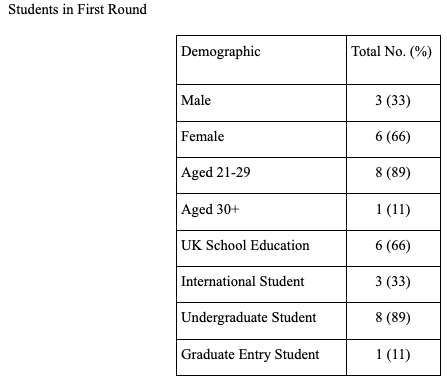

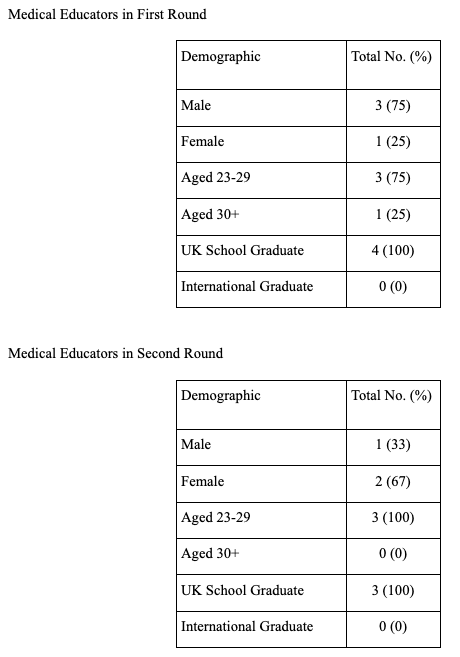

Clustering and Horizontalisation
Clustering was performed based on themes in the literature and which may have emerged during the course of the interviews. Based on this horizontalisation was performed extracting the invariant constituents for each participant. All invariant constituents were then used to form the textual description for each participant. The textual descriptions for each participant were used to form the composite description for each participant group; medical student, medical educator and senior educator.
There were six key themes explored amongst the participants’ invariant constituents based on themes in the literature review as well as voids in the research being examined by this study. These were:
Factors influencing students’ use and perception of mobile learning
Factors influencing educators’ use and perception of mobile learning
Participants’ perceptions of social media in medical education
Digital literacy and experience with mobile learning in clinical practice
Experience with collaborative mobile learning
Potential of student engagement with mobile resource design
The effect of the COVID-19 pandemic on the use of mobile learning (for second round only)
Early on in the analysis process it became apparent that there were a number of emergent themes across the transcriptions. These were:
Mobile learning as perceived as a field of pedagogy
The future of medical education
Assessment with mobile resources
During horizontalisation the key invariant constituents which were felt by the author to capture the essence of the phenomenon being studied (Moustakas, 1994) were included in the composite descriptions so to allow greater reflection of the life experience of participants. The composite descriptions are presented with headings for these emergent themes and their key invariant constituents.
Composite Descriptions: First Round
Medical Students
Perception of mobile learning
All of the students considered themselves positive toward mobile learning to varying degrees. Students felt mobile learning served as a supplement to more traditional teaching.
Medical Student C
“I think it's something that you'd use to supplement your learning, not something that you'd use independently to sort of teach yourself from scratch”
There was agreement amongst the students that they would not engage as well with mobile learning as with more traditional learning and anticipated issues with discipline and motivation.
Medical Student F
“Personally I could do with like a teacher stood behind me like whipping me to get me to work.”
Factors influencing use of mobile resources and experience of collaboration
Recommendation either from a medical educator or a peer was needed before the students would use mobile learning resources.
Medical Student B
“ it's pretty much recommendation for me it's like what I've heard from others are good I just used those ones I don't particularly sort of go around looking for new information I just use what's told”
Only one student mentioned themselves recommending a resource to other students. No student had used mobile learning for collaboration with other students, however, they did see the potential to use mobile learning for collaboration. There was a preference for face-to-face contact with educators and other students.
Medical Student C
“I don't think the platforms I've seen truly compare with just like being sat around a table with someone”
Digital literacy
Students agreed that digital literacy was an important skill for doctors. Students had seen mobile resources and devices being used clinically by doctors of different grades. This helped their confidence when it came to using the same resources and devices. There had previously been an assumption that using a smartphone in a clinical environment would be unprofessional. Two of the students mentioned smartphones being banned at their school.
Mobile resources and stage of medical school
It was felt that the clinical phase of the course provided motivation to use mobile resources due to an urge to seek out extra information to avoid negative consequences such as falling behind in knowledge. As a result it was felt that mobile resources are best used in the clinical phase and would be too advanced for the pre-clinical years. Students were also concerned about more junior learners being anxious without more traditional learning.
Medical Student I
“I think the one difficulty with online resources is that they are sometimes designed for people at a much higher level than we are. So I think even now sometimes using them I can feel a bit overwhelmed”
They voiced concern regarding objectives and other expected standards which contact time seemed to assuage. It was felt that mobile learning in comparison might increase anxiety unless standards were explicit or even demonstrated, such as with a video.
Medical Student I
“I think a really helpful thing would be some kind of consensus on clinical skills”
Current use of mobile learning
There was a difference in the students between those who felt they had used more mobile resources since starting CP1 and those who were using fewer. Those who were using more pointed to the opportunistic and practical nature of mobile resources.
Medical Student G
“it's really easy to find things using your phone basically and it everything has to be accurate so you can just take out your phone and like search up NICE guidelines”
Those who were using fewer did so because there were recommended textbooks for the course they were using instead. However, it was noticed that some students described using their smartphone in a clinical environment but did not consider this as mobile learning as they were in the environment at the time.
Medical Student D
“it's been a lot more focused on being on the wards and just trying to respond to what you find there and that necessarily is something that has to be done in person. Not at a distance.”
Some students did search for mobile resources such as smartphone applications for revision. However, use was short lived due to a variety of reasons such as being from the USA or poor usability. Consistent use of resources was linked to recommendations from educators and repeated use during teaching sessions. The BNF application being used during Therapeutics sessions was mentioned by several students as an example of this.
Perceptions of social media in medical education
Discipline was also considered to be an issue in using social media for education. Students were generally against using social media in education. It was felt that any mobile resources would require oversight and facilitation from medical educators.
Medical Student G
“I can't really imagine using social media for educational purposes”
University mobile resources and access to technology
Students felt competent in their skills using mobile resources and accepted that there was an assumption from the university that they would be able to use mobile technology adequately. All agreed that digital literacy was an important skill for doctors but it was also felt skills didn’t need to be too advanced and one student had observed a ward round being held up due to technical issues. One student with prior experience with mobile resources was disappointed in the quality of resources he’d seen in the clinical setting.
Medical Student D
“coming into this world I was absolutely amazed by how primitive a lot of it is”
Another student said her non-medical friends had been surprised at the degree to which she could progress on her course via online learning rather than through direct contact.
Medical Student A
“friends and family they were a little pretty shocked that...could've actually just do University from a bedroom just listening for them online if you wanted to. “
They were negative regarding university mobile technology in particular about correct information and reliability. Students felt any future resources would have the same technical issues.
Medical Student G
“I’d just be genuinely surprised if the university managed to put out an app that actually worked”
However, it was felt that the university and educators should be creating resources. Standardised clinical examination examples were seen as one area where resources would be very useful.
Medical Student B
“the university should definitely be doing more apps and so guides and things I think are clinical skills teaching in first and second year was a bit hit and miss so that other universities have for YouTube videos with exactly what they want online. So you could watch them and know exactly what you need to do but here it's sort of like here's a checklist.”
It was felt that mobile learning and e-Learning both aided uniform learning across different sites and helped create a universal experience. It was felt that in order for students to fully utilise any mobile resources the university would have to consider equipment and previous experience of a lack of support in this area was reported. No student suggested or mentioned being consulted by the university prior to any new resources being released.
None of the students valued university innovation as a consideration during applying and instead looked at reputation, course design and the pass rate. One student felt that there needed to be a session on available mobile learning resources at the start of CP1 induction. It was felt that the university needed to be better at signposting resources.
Reliance on mobile devices
There was agreement that basic knowledge is needed as a doctor but beyond that further information could be accessed as needed and this was a skill that needs to be taught. However, there was concern about becoming too reliant on technology.
Medical Student A
“if you can't function without having something in your hand like a phone then that's not really going to be sustainable long term”
Medical Student G
“ why do I need to remember the order of drugs to give for like hypertension when I can just search it up?”
Design of learning session based on mobile learning
It was argued that any course based on mobile learning would not be radically different from other teachings that the students had experienced in particular Anatomy in the pre-clinical years and Pathology and Therapeutics in CP1. In Anatomy and Pathology, there is central teaching with extra resources for self-directed learning. Some students felt this model encouraged them to learn whilst others felt they did not have the motivation to make the most of opportunities in this way but still saw the value in it. In Therapeutics, the sessions are based on problem-solving and using the British National Formulary (BNF) application to access information relevant to the case being discussed. These sessions were mentioned in particular as a reason why students had accessed mobile resources.
One student had experienced the flipped classroom at school and felt there was a similarity. Students were mixed in their support for the flipped classroom. This was linked with trepidation regarding discipline and motivation of self-directed use of mobile resources in general. However, it was felt that mobile resources might allow closer oversight of progress.
Medical Student A
“it's just a risk of it all becoming too much online and just, yeah need some kind of interaction at the end of the day like you need to be able to talk to a patient”
Medical Student D
“I certainly don't trust myself... going more mobile doesn’t necessarily less oversight and potentially, possibly an earlier lighting up issues.”
Medical Student F
“the sessions that I take most away from are the ones that I've...I've done all the further reading before.“
Students felt adopting mobile learning was an acceptance of social trends regarding smartphones and other mobile technology. Students saw it being used in simulation and clinical decision making or to look at cases before then discussing findings in a traditional classroom setting. Formative assessment was also suggested. It was felt it would be too overwhelming in the pre-clinical course and would work best in small groups.
In appraising online resources some students did use skills taught to them as part of their course. Others used common sense and chose resources by reputation. Students did use resources not approved by the university such as Wikipedia but as a starting point and not as their only resource.
Medical Educators
Mobile resources in clinical practice and in teaching
All of the medical educators used either online or mobile resources as part of their clinical practice for quick reference. The majority (three) of the medical educators used mobile resources as part of their teaching either in a classroom or ward based environment. They mentioned that this reflects real life practice and prepares students for working as a doctor. Their attitude towards mobile learning was predicated on their own use.
Medical Educator A
“anything I’ve used or had experience of I would recommend and I found easy to use, yeah I’ll just recommend to people”
One educator discourages the use of mobile devices in her sessions.
Medical Educator D
“in the classroom, I have to say I'm not a massive fan of mobile phones because I see students on Facebook, Instagram and texting...I do think that it ultimately does distract you from what is going on in front of you”
Educators who didn’t regularly teach using mobile learning described themselves as “old fashioned” in their outlook.
Medical Educator C
“So I would probably say I'm a bit more old-fashioned...I'm still probably more a textbook kind of person”
Medical Educator D
“So, I think I'm probably bit old-fashioned in that no not really I know that some of my other colleagues at induction will recommend certain apps and things and I have to say that I don't. And that's because I don't use them myself”
Practicality, the amount of knowledge available and the rate of change were also factors in choosing to use these resources in both teaching and clinical work.
Medical Educator B
“I think the best way to learn to use technology is often by necessity”
Factors influencing the use of mobile resources in teaching
Mobile resources were recommended if they had been used in the educator’s own clinical work and so were trusted and from a validated source. The mobile resources mentioned were published from renowned books or websites that predated them.
Medical Educator B
“I tell them to download the BNF on the first day of placement...the reason I recommend those apps is because I use them as a junior doctor and they need to get comfortable using those different modalities of accessing information”
The medical educator who didn’t recommend mobile resources did so because she didn’t use them in her own practice rather than for an educational reason. One medical educator believes that without technology doctors will struggle to stay relevant.
Medical Educator C
“I've seen the most senior consultants pull out their smartphones and use it for very specific things. Research changes so quickly...the ones that are slow to change others ones that are slow to stay relevant”
There was a discussion about how mobile learning was impacting students’ relationships with knowledge.
Medical Educator B
“I think a lot of the students take a lot of knowledge for granted and knowledge is a bit more
disposable...how you get the information becomes the key cornerstone of it rather than the actual information itself.”
Medical Educator C
“think there are some limitations in it that some students would be reluctant to get too deep into the actual knowledge...”
Digital literacy and designing teaching based on mobile learning
All of the medical educators agreed that digital literacy is a key skill for doctors and that access to and proficiency with mobile technology were expected in medical students.
Medical Educator B
“we’d be doing our students a disservice if we didn’t improve their computer literacy as well”
It was mentioned that support is needed for medical educators to produce their own resources. Three of the medical educators had experienced issues with using mobile technology in their teaching, mentioning Wifi failure and difficulties with information governance as reasons sessions hadn’t gone as planned.
One medical educator felt unsupported by the university when trying to set up a new teaching programme based on mobile learning as they wanted something more tangible and traditional. One of the medical educators always has a backup plan when a session using technology is planned due to a fear of issues arising.
Social media in medical education
One of the medical educators was enthusiastic about using social media in education as the best way to keep up with developments in Medicine.
Medical Educator A
“Yeah I think it’s a good thing…because advances in medicine and things are changing sorted so rapidly, it seems to be really the best way to sort of keep up with those advancements”
Other medical educators were hesitant. It was believed that social media posed the challenge of students being able to vet the information they find. It was felt that this is not a skill taught well to students. There was agreement in doctors having some form of social media presence and using it to share information. The risks of professional behaviour and public image were mentioned, with social media activity as a student having potential repercussions even when graduated. However, the use of social media as a community was mentioned as a benefit.
Medical Educator D
“I have very mixed feelings about social media in general, in terms of our lives as doctors. Because I think we are, whatever you put out is exposing you to a certain amount of risk..I do think it's a valuable resource and the other thing that I suppose that Twitter specifically gives you is a sort of a sense of community as well. And medical school can be incredibly isolating, it can be very lonely sometimes.”
One medical educator surmised that that educational and research in the future might change as a result of students now being so accustomed to and experienced with social media.
Medical Educator C
“the question will come in about five or ten or fifteen years’ time when the people of this current age other people that are making their decisions. When they're consultants and they're the ones that's putting out information are they then going to be susceptible to was kind of sensationalism to get the message out and cut corners on research or discussion or context”
Collaboration using mobile learning
One medical educator was concerned about him and his colleagues working in silos and needing to collaborate further. Although there was agreement about using mobile learning to access up to date information there were no further comments about sharing information across mobile resources.
Medical Educator B
“I think if we are to innovate, we need to have a more networked approach between the different educational providers...we’re replicating the same work that’s being done in multiple different hospitals open around the world”
Role of the educator and mobile learning
All of the medical educators saw themselves in some kind of guide or signposting role when they teach.
Medical Educator D
“I'm very much there to kind of guide”
All emphasised that they are not the source of all information. They all bring their own clinical experience to teaching emphasising the nuances and differences from a theory that can happen in real life. This came out as one of their perceived strengths of the teaching fellow role. These nuances were felt to be important to clinical medical education. One medical educator felt that the traditional teacher role didn’t suit modern Medicine.
Medical Educator C
“I think because actually the unique role that our current role as clinical educators is that we are more, we are closer to them from a teacher learner role than a traditional classroom environment teacher learner role. Whereby they would always look up to the teacher and expect them to know everything , that’s not what Medicine is and again that rose back to what we how we practice clinically”
Perceptions of mobile learning
Reaction to educators focusing on mobile technology was mixed. One medical educator felt teaching through mobile learning wasn’t vastly different from situated learning or social learning theory whilst another felt it sounded like PBL.
Medical Educator B
“situated learning and potentially social learning theory, because we’re using technology to
communicate between people. It's just changing the format of the communication. And then
situational learning we’re just placing the learning activity in a different situation with different technology. But it’s still an information exchange, it just happens since before educational theory were invented”
Medical Educator D
“certainly my understanding of PBL is that you're given a problem and you're asked to solve it and you're shown potentially where you might look for that information. So on the face of it sounds very similar”
There was general agreement that using mobile learning is well established as an educational tool and that it would work best for the more experienced undergraduate students or in the postgraduate sphere.
Medical Educator B
“For junior undergraduate medical students, they’ve not learnt that level of critical appraisal yet. So, getting them to use resources where it’s not all valid and it’s not over liable information becomes a bit of a dodgy situation in my opinion… It’s not something that we explicitly teach very well in undergraduate medicine for, perhaps using technology is a good way to do it.”
The medical educator who doesn’t use mobile resources felt that her normal approach using real life props such as clerking sheets was similar in principle to using mobile learning just without the technology as it focuses on realism.
There were concerns that weaker students might not engage with mobile learning and that it would be harder to keep an eye on student progress. It was felt that mobile learning would require an element of contact time with more traditional teaching to ensure there is a grounding of theoretical knowledge. One medical educator mentioned her own opinions regarding the cost to students of medical education and the expectation of contact time that comes with this.
Medical Educator D
“If I’m paying for something I’d quite like that to be delivered to me.”
Designing teaching sessions based on mobile learning
It was felt that mobile learning would work better in smaller groups of students. Proposed sessions involved simulation to replicate real world practice or in case based discussions looking up guidelines and treatment algorithms. One medical educator suggested running the session similar to PBL.
Medical Educator B
“I think like using a PBL type session, would make a lot of sense”
Another proposed session was similar to the flipped classroom which two of the medical educators had used with good results. One had encountered as a student himself.
Medical Educator A
“I’ve had experience of it as a learner, quite a long time ago and it was very different then...whereas, now because everything sort of is more to hand, I think you’ve got more ability to make it more interesting and more interactive...some sort of interactive learning, after the teaching and then come back and stop discuss that...then feedback on what they’ve found or they could do it through case based discussions or something”
It was agreed that students usually brought correct information to flipped classroom sessions without much direction needed. It was also felt that mobile learning activities would follow a more traditional didactic session and would need to be explained to students as a concept.
Medical Educator C
”would not be the first thing you do, but it may be the third or fourth type of thing you would do. So you would use it to build on top of previous knowledge that you gained from a different aspect or something”
Concerns were voiced about how information could actually be covered in this session with one medical educator feeling it would cover more behavioural activities than knowledge.
Medical Educator C
“I guess you just have to be careful of how much information from a knowledge one of you are going to try and give in this sort of setting….but I guess it would be more from work from a behavioral point of view that I would try and plan a session. And less on hard cold facts trying to get people thinking in a particular way as opposed to these are the set numbers I was you’re able to learn”
No medical educator saw mobile learning as completely or mostly replacing traditional learning exercises. No medical educator suggested involving medical students in the creation of resources.
Senior Educators
Student engagement in designing mobile resources
One senior educator had noticed a push for resources from students and suggested forming a focus group with them.
Senior Educator E
“I think there is certainly a push for more resources. ..But I think you know I think giving them a choice you know I think is something that we wanted, we've had to find you know to find out and do focus groups and stuff”
Perceptions of mobile learning
All of the senior educators had experienced mobile learning in some capacity although only one had actively used it in their lessons with interactivity and pre-course materials. One senior educator was sceptical about mobile learning in general, viewing it as similar to reading a book, albeit easier to seek out information. He felt with technology there was a focus on the novel over their actual value and that mobile learning brought unique challenges due to the unpredictable quality of information available.
Senior Educator C
“learning, is learning, doesn't matter how it's delivered...the fact that it's shiny in technology that makes it seem like it's something special...it brings with it far more problems that any of the other methods because as well as all the good information you've got a lot of dross in there as well”
One senior educator felt her age and preferred approach to learning precluded her from using mobile learning.
Senior Educator D
“No, I'm very old...I would like to have time to be a bit more reflective about it (reading), which is probably why I haven't used it as a learner...But I guess I'm not, you know, I might not be typical and young people might like to do it.”
Role of educator
All of the senior educators agreed that medical education had moved from the more traditional models. There was a general agreement of the role of an educator as either a guide or facilitator.
Senior Educator A
“I do see it very much as a facilitator role rather than a teaching role and I think that something has changed over my period of life as an educator.”
Access to technology
Technological limitations were mentioned as affecting the use of mobile learning; in particular the availability of Wifi. It was felt that modern students all have access to mobile technology and the ability to use it. The University of Nottingham had considered giving students a mobile device as part of their course but this has been rejected in favour of infrastructure investment and it was felt that students would rather use a device they were used to.
Senior Educator C
“I think part of the argument of not doing that is well actually most students have got their own preferred device and better to try and run systems that can actually work”
Although it was argued that it was possible to study Medicine without mobile technology it was noted that the university only had to loan mobile devices to fewer than ten students a year.
Digital literacy
It was mentioned that teaching with technology can often focus on the teaching about the technology itself which one senior educator felt was unnecessary due to the students’ abilities growing up in the mobile era.
Senior Educator B
“kids are doing that all the time they're experts in it.”
Another senior educator felt that current students had been conditioned and protected with modern technology and did not have the experience of his generation with the internet in its earlier imperfect stages and so their technological knowledge was lacking.
Senior Educator D
“we say that students are okay with technology but actually the students who are starting University now aren’t as technically literate as students who were starting five ten years ago…if something goes wrong they don't know how to deal with it...”
Innovation
Innovation was seen as useful with varying degrees of emphasis. It was agreed that branding was still important to the university at least for now, although one senior medical educator felt this would change quickly without innovation.
Senior Educator B
“I think in the short term clearing the branding and the names will stand out but I think if universities are clearly left behind that will become apparent very quickly”
Senior Educator C
“Russell Group universities look better on paper and even with fluctuations in league tables...there's a brand behind the universities”
Two of the senior educators pointed out that innovation does not mean technology alone and pointed to curricula as an area for innovation that students appreciate.
Future of medical education
One senior medical educator went further and argued that Medicine was moving away from being doctor focused into a more generic medical worker from various backgrounds accessing knowledge as needed. He also felt that a number of medical professions may be made redundant due to technology and that universities would become increasingly redundant with more virtual education.
Senior Educator B
“I think in the future the concept of a doctor is a kind of a dead duck...we'll be looking at a kind of a more generic healthcare worker...Radiology as it is now probably won't exist... “
Two of the senior educators admitted they did not know what medical education would look like in the future and this was a challenge to the university and medical education.
Senior Educator C
“(is)a new medical student gonna be prepared to be working in to 2050, which is what they’re going to be doing now, which is very, very scary.”
Collaboration
It was felt that the university does not collaborate as well with other universities as it could do. There was an understanding that branding and intellectual property were important and to forego these would mean missing out on funding.
Senior Educator C
“I was quite frustrated...I can see the other side of it...it would be giving away, you know up to 40 percent of income, if it were to relax its intellectual property rights”
However, it was argued that once students are at university and with the forthcoming GMC Medical Licensing Assessment competition more cooperation may be necessary. Memorandums of understanding were suggested as a way around intellectual property rights.
Senior Educator D
“we shouldn't really be competitive with (other) medical schools...we're after students who are...all pretty much the same...once we've got them do we need to be competitive...we're all moving towards the central licensing examination, so we should all be singing from the same hymn sheet”
Mobile learning as pedagogy
Only one of the senior educators was enthusiastic about mobile learning due to its benefits with individualised learning and wanted it to be embedded more into the curriculum but only if it was blended.
Senior Educator B
“I'm a great supporter of the concept and I think it's got a massive value...it allows for individualised learning in a way that we don't at the moment tailor it to...I think they have to be part of a blended approach”
The other senior educators varied from calling it a “tool” to dismissing it as a “21st-century PBL”.
Senior Educator A
“It’s a tool, one of many”
Senior Educator C
“I think it's just it's just a progression of technology of it is a sort of it is a more up-to-date 21st century PBL really.”
There was agreement that the amount of knowledge and rate of change made retention difficult and necessitated the ability to access information quickly.
Senior Educator C
“the actual sheer amount of knowledge is impossible for any one person to hold”
Senior Educator D
“there's a lot to be said for that approach I agree that really we shouldn't focus on knowledge, delivery of knowledge as much as being able to find the knowledge out for themselves”
Mobile learning in clinical practice
Two of the senior educators noted that they were using mobile learning in their clinical work and felt comfortable with this. There was acceptance of doctors admitting the limits of their knowledge although this may go against the current culture in Medicine.
Senior Educator B
“I think one of the most important things for the medical profession to learn to be able to say is I don't know...goes really against the grain of what its being kind of impaled into them. And that's dangerous for patients”
Senior Educator E
“I will say to them that I just want to check the current guidelines.”
There was discussion about the dangers of being reliant on technology and how useful a doctor with limited knowledge would actually be especially in situations without technology. It was felt that mobile resources are only useful with the foundation knowledge and would need scaffolding with traditional teaching methods.
Senior Educator D
“you can't go orienteering if you don't have to read a compass.”
Senior Educator E
“I think that would be harder if you'll coming in without baseline knowledge...talking about the novice learner...I think that's harder because the more advanced learning will you'll be able to scaffold that information”
Role of mobile learning in medical education
All of the senior educators commented on the importance of communication and interpersonal skills and doubted that these could be taught through mobile learning.
Senior Educator A
“unfortunately that we’re potentially going to miss...one of the things I think people get out of sometimes face-to-face learning as I would class it, is that social interaction as a group. Being there in the room and I don't think whether you could get that (with mobile learning)”
It was argued that students choose optional modules and provide positive feedback based on contact time with educators over other learning opportunities. It was also felt that students are resistant to non-classroom based learning against experiential learning which two of the senior educators felt was the correct model for clinical learning.
Senior Educator C
“experiential learning for Medicine is really important,,,the more you do that you see the nuances and things fall into place and that's I guess that's what our current students are perhaps lacking.”
Senior Educator D
“students are very focused on the fact that they're paying for an educational experience..they’re customers and they want face to face time which shows, you know in their preferences for attachments they would prefer to go to attachment that provides lots and lots of classroom teaching”
One of the senior educators admitted choosing courses based on the amount of social interaction.
Senior Educator A
“I picked the course that had face-to-face learning education rather than one that was solely based on e-learning as their prime resource.”
It was commented that as technology becomes more prevalent there will be increased importance on medical students to learn and provide non-technical skills such as compassion and empathy.
Senior Educator B
“they still need to be able to interact at a human level...to impart all the other elements of healthcare which are around communication, kindness. All of the things to help make people physically and spiritually better.”
The Johari window was mentioned in the context of doubting that students would be able to address all their learning needs using mobile learning.
Senior Educator C
“you don't know what you don't know. Doing that Johari window and you don't know where to look”
There was some feeling that mobile learning would better suit postgraduate students who already have a core knowledge set.
Senior Educator D
“probably more so in the postgraduate sphere where there on any fixed learning objective..the undergraduate course there are boundaries to what we expect them to know and we don't need them to go...when you're in clinical practice anything can present”
Teaching sessions based on mobile learning
Mobile learning teaching sessions were seen as using mobile devices for engagement in larger groups whilst for smaller groups sessions on situation judgement or similar to PBL or the flipped classroom model were suggested.
Senior Educator C
“it's more that's a flipped classroom...go away you know look at this subject and then come and then within the class you'll actually then start to work through to the next level.”
Assessment with mobile learning
When it came to assessment with mobile learning different models were suggested including in work assessment or simulation demonstrating information seeking in a real world setting. Open book knowledge exams were suggested as well. It was argued that such assessments would be add-ons only rather than the main mode of assessment.
Senior Educator E
“assessment is changing all the time and I think we have to align ourselves with the direction of where things are going…”
One senior educator said that mobile learning was not in the university’s plans for future development. It was argued that the GMC would need reassurances from the university that learning had taken place using mobile learning and felt it would be difficult to achieve. An example of compulsory e-Learning modules being left to run in the background was used.
Senior Educator C
“The GMC is a quality assurance body...it would have to have all of the assurances that...your students have actually opened on the message and actually learn it...sometimes you know this compulsory learning...you have a 20 minute podcast... I switch it on sometimes and walk away and make a cup of tea...those sorts of things immediately the GMC quite rightly would not want to endorse”
Social media and medical education
Senior educators were mixed over social media. It was equated positively with professionals talking as though in the doctors’ mess but was also seen as a barrier to social interaction. Social media was equated to Wikipedia as a potential starting point to find information and there was acceptance of using a variety of sources not necessarily from a university for finding information but it was emphasised how important it is to use quality assured sources and facilitate.
Senior Educator A
“I think it's great if it's been peer reviewed”
Senior Educator B
“the best learning is done by people just sitting around chatting...the ability to do that virtually in chat rooms and chat forums and stuff like that is again it's the same thing as a social construct”
Senior Educator C
“you know I get pretty angry if I'm trying to teach a group of students and they're actually twittering at the time...I don’t like it in my gut it annoys me....it comes down to...interpersonal relationship skills that I find that...a bit rude to be honest”
Senior Educator D
“if they're using social media as a jumping-off point to find other thing, then that's absolutely fine. It's no no different than having a chat in the doctor's mess”
It was commented upon that the Trust computers block or limit a lot of social media sites that students might use for clinical knowledge. There was a general agreement that there is no explicit teaching in appraisal skills for medical students. It was hoped they are picked up in their honours year project or through trial and error.
Composite Descriptions: Second Round
Medical Students
Students openly admitted fear and a desire to help during the pandemic.
Medical Student O
“I was obviously worried...my family was worried too...you just want to be safe, for everyone to be safe”
Medical Student P
“I wanted to help, that’s why we want to be doctors, to help”
All students reported using more online resources since the onset of the pandemic. This seemed to be driven by necessity more than any other reason and due to convenience. Some students noticed a change in their approach to finding information themselves or in asking to be signposted by their educators.
Medical Student K
“I’ve definitely used online things more since the pandemic”
Medical Student O
“It's a necessity isn’t it? It can be that or nothing”
Medical Student P
“Needs must”
Medical Student K
“Rather than waiting for something to be given to me I had this time, I was at the computer anyway why not have a look at what there is?”
Medical Student L
“I looked at lots of things...I was asking more for guidance to resources than I would have done before when I wouldn’t ask to be pointed to stuff online”
Students had noticed the amount of fake information being spread especially on social media which had fostered a distrust of the medium.
Medical Student J
“I realised how much rubbish is out there”
Medical Student L
“I think I tried to stay off social media anyway let alone for learning”
Students were mostly negative about the change compared to their previous teaching. There was some discussion regarding the lack of contact time and the perceived lack of value for their tuition fees. One student categorically stated that they would not have gone to a medical school taught virtually. Loneliness and boredom were common experiences. One student, however, had seen some benefits to virtual learning, especially the flexibility it afforded.
Medical Student J
“I think it made me miss face-to-face teaching more”
Medical Student J
“It’s not what I signed up for...obviously this was unprecedented...but...not what I signed up for at medical school at all...I would never be at a medical school run like this”
Medical Student L
“I hope things get back to normal as soon as possible...it’s not really how to be a doctor is it?”
Medical Student K
“I miss my friends. I miss patients and going out to hospital...I’m fed up of my room”
Medical Student O
“It is a lonely way to study...I know it’s all unprecedented but it’s not exactly value for money is it?”
Medical Student P
“I’m not saying I’d want this to carry on forever...but some things are better...like why can’t I learn when I want to?...I’d be sad if we didn’t keep some of the changes”
Medical Educators
The medical educators reported a feeling of confusion at the beginning of the pandemic with face-to-face teaching being cancelled as well as the obligations of being a doctor foremost. They reported needing guidance from the university in adapting their teaching and being safe for students. Once again, a necessity as a driving force was mentioned.
Medical Educator E
“It’s been weird...so weird”
Medical Educator F
“There was a time of just thinking ‘what on Earth can I do?’
Medical Educator G
“I’m a doctor first. So I wanted to be there for patients. I’m sorry but teaching wasn’t my priority”
Medical Educator F
“We needed guidance...like...talking to the university...what do you want from us now?”
Medical Educator G
“I had a timetable and everything arranged and I’d planned my teaching. The next thing I’m being told that it’s all cancelled...was a really disconcerting moment...wondering what the heck to do”
Medical Educator E
“Safety had to be the priority”
Medical Educator E
“There’s that saying about necessity being the mother of invention or something. There was definitely a moment of thinking ‘what can I do?’”
Two of the educators stated that they had been forced to try new things in their teaching as well as creating new learning materials.
Medical Educator F
“It made me try new things. I had never used Teams or made anything for online teaching before”
Medical Educator G
“Definitely a lot of chaos...lot of having to do stuff I had never done before”
Two of the educators had sought the help of other educators in order to meet their teaching obligations.
Medical Educator E
“Principles were the same but still I was asking for help a lot”
Medical Educator G
“I needed help”
All of the medical educators felt that students needed more guidance in the new learning environment than before. There was discussion about students having a responsibility to use the time they had productively as well as whether students could be trusted to find resources themselves.
Medical Educator E
“Students can’t just go to the ward to practise or you can’t just take them to ward so we had to be better at finding stuff and I think students needed a really clear guidance to resources”
Medical Educator F
“There was a moment of saying to students ‘you have this time, use it to find stuff’ but they definitely needed guidance to resources”
Medical Educator G
“Students really can’t identify good stuff”
One medical educator felt that the change in teaching reflected broader changes seen at the clinical level.
Medical Educator G
“There was enough change at the clinical level with distant consultations etc we had to show that change in teaching as well”
However, one educator had concerns regarding pastoral support for students online.
Medical Educator E
“There’s definitely something lacking. In the room you can judge a student’s body language and see if they're struggling. You can’t see that on a screen, even if they had their screen on, or in emails”
Two medical educators were pleased about their experience in making online resources. One felt that all educators would need to make some online materials as a back-up at least while the other felt teaching online was not as good as traditional teaching.
Medical Educator F
“I’d be pleased to go back to ‘normal’ but definitely I think now every educator needs to have some online stuff”
Medical Educator G
“I made online resources and felt proud of that but it didn’t feel anywhere near as good (as face-to-face teaching)”
Senior Medical Educators
In a similar vein to the medical educators, the senior educators recalled the feelings of confusion at the start of the pandemic. There was some discussion about involving students in the changes made and how those changes were communicated. Student safety was again a concern with one senior educator arguing that by keeping students safe there was space to make further decisions later. It was felt that students needed to be patient due to the nature of the disruption.
Senior Educator A
“Student safety has to be the priority. End of”
Senior Educator B
“I think students understood the changes. It’s not as if this was a foreseeable circumstance. We had to explain to students that we were doing the best at all times but the situation was very, very fluid”
Senior Educator C
“Basically...everything was out of the window”
Senior Educator A
“You’d love to include students in this but, ultimately, you have to make decisions and in the beginning it was very much about...being safe, let’s make the safe decision first and let’s go from there”
Senior Educator B
“It’s not great to be totally top-down but what’s the alternative? There’s a deadly pandemic virus on the one hand and on the other a group of young people we have a duty of care for. It’s a no-brainer to say ‘stop it, be safe and we can look at things in the future’”
Senior Educator C
“Obviously students had concerns but I didn’t feel there was anything wrong in saying ‘give us a bit of time here’...it’s not as if we knew this was coming and we had to...build the plane while flying it”
With regard to moving to online teaching, the senior educators acknowledged that there was a lot of disruption. They disagreed about how ready they felt the university was. There was a discussion about how everyone needed to learn how to switch to online working and how to bring the students along.
Senior Educator A
“There was a model which is very tried and tested, this clinical attachment with students learning through time with patients...almost like an apprenticeship...suddenly we can’t use that anymore”
Senior Educator B
“I was in meetings with other doctors where we couldn’t get Zoom to work and I remember feeling worried. I thought everything was going to go wrong”
Senior Educator C
“Luckily we had a virtual learning platform to share information, slides, podcasts etc and so we had some expertise and something to use as a launchpad for more things”
Senior Educator B
“I think it’s something we all got better at...there were tips all over the place about how to use Teams and how to actually have an online meeting...people really needed to learn this stuff and that includes students...can’t just do the same thing online and that’s learning”
Senior Educator C
“You had to acknowledge ‘this is weird’ and set some rules and guidance because students didn’t know how to do it”
There was also a discussion about how assessment was shaped by the pandemic. Not all of these changes were felt to be negative.
Senior Educator A
“Basically we had to say what we couldn’t do and then look at what was left, what we could do...we can’t do exams in person so what can we do online?”
Senior Educator C
“Maybe it showed what is actually necessary. Rather than the ‘nice to have’ we were looking at the essential only...we had online vivas without patients but exploring concepts with students. That was obviously a compromise and not ideal but it took a fraction of time and money...not saying this is the future, like I said it wasn’t ideal but it showed an alternative which had merit”
There was also a discussion regarding the future. It was felt that some degree of virtual communication will remain but that it was impossible to jump to telemedicine without the step of patient contact on the way to gain experience. It was felt that any changes toward virtual medical education will follow changes toward virtual medical practice.
Senior Educator A
“I think we will all want to get back to normal as soon as possible. Maybe in future rather than meet in person we will say ‘let’s chat on the phone’ or on Teams and maybe patients will push for telemedicine as it fits in with them but I think medical education will get back to normal as soon as possible”
Senior Educator B
“I don’t think this is how things will be done. Medical education follows medical practice and so the only way you’ll get it being the future is is medical practice is all virtual”
Senior Educator C
“Patients are the focus of being a doctor and so you’ll always need that patient contact. It’s one thing having the patient contact experience and then moving to virtual consultation but another thing entirely to skip that step...of patient contact...and jump to the virtual”
Summary of findings
This study broadly supports previous literature; that educators do not perceive all mobile resources to be of equal value and are particularly mixed regarding social media. Participants valued contact time and viewed mobile resources as an adjunct, not a replacement, to traditional methods of teaching. There was broad agreement that mobile learning would require a foundation of knowledge best achieved through more traditional learning such as seminars with direct contact. It was suggested as being best used for senior students or in postgraduate education. Suggestions on the best use of mobile learning focused on using it to supplement established teaching or as well signposted stand alone sessions after more traditional learning had taken place. Students did not perceive university resources to be of high value. Educators pointed out that mobile resources are just one example of innovation and may distract from work in other areas such as curriculum design. All three groups of participants were concerned about professionalism and discipline using mobile resources, especially social media. Educators all expect students to have a certain level of digital skills. However, some students are discouraged by mobile resources. Students were likely to use a mobile learning resource if it was recommended by an educator or peer. There were concerns from all participants about fostering a reliance on navigation at the expense of knowledge and how this might impact on the standard of clinical acumen. This reflects similar concerns of dependence reported in the literature (Maudsley et al., 2018). Only one participant, a senior educator, suggested forming a focus group with students to discuss mobile resources. No student suggested something similar. Mobile collaboration experience amongst participants was limited.
In the second round of interviews, post-pandemic students reported increased motivation to find resources for themselves. Educators believed an increased use of mobile resources in education reflected an increase in clinical practice at that time. It was also felt that online teaching needed a foundation of physical learning to build on. It was still felt that students required guidance on identifying resources of good quality. There was a perception that a feature of the pandemic was a lot of misinformation online. Both educators and senior educators admitted to a lot of improvisation at the start of the pandemic with student safety a priority. Concerns regarding student pastoral support and value for money were voiced. Senior educators had switched to virtual student assessment which had paired back some of the domains being assessed. Some of the changes were not viewed entirely negatively with a major positive being the ability for students to learn independent of the location at a time to suit them.
References
Amara, S., Macedo, J., Bendella, F., & Santos, A. (2016). Group formation in mobile computer
supported collaborative learning contexts: a systematic literature review. Journal of Educational
Technology & Society, 19, 258–273.
Anderson P (2007) What is Web 2.0? Ideas, technologies and implications for Education. JISC Report. (http://www.jisc.ac.uk/media/documents/techwatch/tsw0701b.pdf;
accessed 15 May 2018)
Arnbjörnsson, Einar. (2014). The Use of Social Media in Medical Education: A Literature Review. Creative Education. 5. 2057-2061. 10.4236/ce.2014.524229.
Berge, Z., & Muilenburg, L. (2013). Handbook of mobile learning. London: Routledge
Bevan, M. (2014). A Method of Phenomenologica Interviewing. Qualitative Health Research, 24(1), pp.136-144.
Bhardwa, S. (2017). Complete University Guide reveals its top UK universities 2018. [online] Times Higher Education (THE). Available at: https://www.timeshighereducation.com/student/news/complete-university-guide-reveals-its-top-uk-universities-2018 [Accessed 20 Jan. 2019].
Boudry, C. (2015). Web 2.0 Applications in Medicine: Trends and Topics in the Literature. Medicine 2.0, 4(1), p.e2.
Bryman, A., 2012. Social Research Methods. 4th ed. New York: Oxford University Press.
Chase, T., Julius, A., Chandan, J., Powell, E., Hall, C., Phillips, B., Burnett, R., Gill, D. and Fernando, B. (2018). Mobile learning in medicine: an evaluation of attitudes and behaviours of medical students. BMC Medical Education, 18(1).
Cheston, C., Flickinger, T. and Chisolm, M. (2013). Social Media Use in Medical Education: a systematic review. Academic Medicine, 88(6), pp.893-901.
Choi, B., Jegatheeswaran, L., Minocha, A. et al. The impact of the COVID-19 pandemic on final year medical students in the United Kingdom: a national survey. BMC Med Educ 20, 206 (2020). https://doi.org/10.1186/s12909-020-02117-1
Christensen, Larry & Johnson, R. & Turner, Lisa. (2010). Research methods, design, and analysis
Clancy, M. (2013). Is reflexivity the key to minimising problems of interpretation in phenomenological research?. Nurse Researcher, 20(6), pp.12-16.
Cole, D., Rengasamy, E., Batchelor, S., Pope, C., Riley, S. and Cunningham, A. (2017). Using social media to support small group learning. BMC Medical Education, 17(1).
Conole G (2017) ’Research through the generations: Reflecting on the past, present and future’, Irish Journal of Technology Enhanced Learning 2(1): 1–21
Creswell, J. W. (1998). Qualitative inquiry and research design: Choosing among five traditions. Sage Publications, Inc.
Creswell, John. (2009). Research Design: Qualitative, Quantitative, and Mixed-Method Approaches.
Creswell, J. W. (2013). Qualitative inquiry and research design: Choosing among five
approaches. Sage.
Davies, B., Rafique, J., Vincent, T., Fairclough, J., Packer, M., Vincent, R. and Haq, I. (2012). Mobile Medical Education (MoMEd) - how mobile information resources contribute to learning for undergraduate clinical students - a mixed methods study. BMC Medical Education, 12(1).
Davies, S., Mullan, J. and Feldman, P. (2017). Rebooting learning for the digital age. Oxford: Oxuniprint.
Demb, A., Erickson, D., & Hawkins-Wilding, S. (2004). The laptop alternative: Student reactions and strategic implications. Computers & Education, 43(4), 383-401. doi: 10.1016/j.compedu.2003.08.008
Dimond, R., Bullock, A., Lovatt, J. and Stacey, M. (2016). Mobile learning devices in the workplace: ‘as much a part of the junior doctors’ kit as a stethoscope’?. BMC Medical Education, 16(1).
Dost S, Hossain A, Shehab M, Abdelwahed A, Al-Nusair L. Perceptions of medical students towards online teaching during the COVID-19 pandemic: a national cross-sectional survey of 2721 UK medical students. BMJ Open. 2020 Nov 5;10(11):e042378. doi: 10.1136/bmjopen-2020-042378. PMID: 33154063; PMCID: PMC7646323.
Duval, E., Sharples, M. and Sutherland, R. (2017). Technology Enhanced Learning. Springer International Publishing, pp.1-10.
Emanuel EJ. The inevitable reimagining of medical education. JAMA 2020; 323: 1127-28.
Ferrell, G., Smith, R. and Knight, S., 2018. Designing learning and assessment in a digital age. [online] Jisc. Available at: <https://www.jisc.ac.uk/guides/designing-learning-and-assessment-in-a-digital-age> [Accessed 4 March 2018].
Flannigan, C. and McAloon, J. (2011). Students prescribing emergency drug infusions utilising smartphones outperform consultants using BNFCs. Resuscitation, 82(11), pp.1424-1427.
Flickinger, T., O'Hagan, T. and Chisolm, M. (2015). Developing a Curriculum to Promote Professionalism for Medical Students Using Social Media: Pilot of a Workshop and Blog-Based Intervention. JMIR Medical Education, 1(2), p.e17.
Fu, Q.K. & Hwang, G.J. (2018). Trends in mobile technology-supported collaborative learning: A systematic review of journal publications from 2007 to 2016. Computers & Education, 119(1), 129-143. Elsevier Ltd
Gishen F, Bennett S, Gill D. Covid-19—the impact on our medical students will be far-reaching. 2020. https://blogs.bmj.com/bmj/2020/04/03/covid-19-the-impact-on-our-medical-students-will-be-far-reaching/ (accessed 25 May 2020) Google Scholar
Glasziou, PP., Sawicki, PT., Prasad, K. and Montori, VM. (2011). Not a medical course, but a life course. International Society for Evidence-Based Health Care. Acad Med; 86:e4
General Medical Council. Information for medical students. 2020. https://www.gmc-uk.org/news/news-archive/coronavirus-information-and-advice/information-for-medical-students (accessed 25 May 2020) Google Scholar
Golenhofen, N., Heindl, F., Grab‐Kroll, C., Messerer, D., Böckers, T. and Böckers, A. (2019). The Use of a Mobile Learning Tool by Medical Students in Undergraduate Anatomy and its Effects on Assessment Outcomes. Anatomical Sciences Education.
Gomes, A., Butera, G., Chretien, K. and Kind, T. (2017). The Development and Impact of a Social Media and Professionalism Course for Medical Students. Teaching and Learning in Medicine, 29(3), pp.296-303.
Gordon M, Patricio M, Horne L, Muston A, Alston SR, Pammi M et al. Developments in medical education in response to the COVID-19 pandemic: A rapid BEME systematic review: BEME
Guide No. 63. Med Teach 2020; 42: 1202-15.
Green BL, Kennedy I, Hassanzadeh H, Sharma S, Frith G, Darling JC. A semi-quantitative and thematic analysis of medical student attitudes towards M-Learning. J Eval Clin Pract. 2015 Oct;21(5):925-30. doi: 10.1111/jep.12400. Epub 2015 Jul 7. PMID: 26153482.
Greene, J., Copeland, D., Deekens, V. and Yu, S. (2018). Beyond knowledge: Examining digital literacy's role in the acquisition of understanding in science. Computers & Education, 117, pp.141-159.
Hagler A. The Pros and Cons of Teaching with Zoom. 2019. http://www.teachingushistory.co/2019/09/the-pros-and-cons-of-teaching-with-zoom.html (accessed 6 July 2020) Google Scholar
Heacademy.ac.uk. (2017). Flipped learning | Higher Education Academy. [online] Available at: https://www.heacademy.ac.uk/knowledge-hub/flipped-learning-0 [Accessed 10 Jun. 2019].
Heacademy.ac.uk. (2018). mLearning | Higher Education Academy. [online] Available at: https://www.heacademy.ac.uk/knowledge-hub/mlearning [Accessed 25 Aug. 2018].
Health Education England. (2018). Digital literacy. [online] Available at: https://www.hee.nhs.uk/our-work/digital-literacy [Accessed 3 May 2019].
He J, Lo D C-T, Xie Y and Lartigue J (2016) ‘Integrating Internet of Things (IoT) into STEM undergraduate education: Case study of a modern technology infused courseware for embedded system course’, paper presented at the Frontiers in Education (FIE) conference, Erie, PA
Hempel, G., Neef, M., Rotzoll, D., & Heinke, W. (2013). Study of medicine 2.0 due to Web 2.0?! -- risks and opportunities for the curriculum in Leipzig. GMS Zeitschrift fur medizinische Ausbildung, 30(1), Doc11.
Hollander, R., 2017. Two-thirds of the world's population are now connected by mobile devices. [online] Business Insider. Available at: <https://www.businessinsider.com/world-population-mobile-devices-2017-9?r=US&IR=T> [Accessed 2 February 2018].
Hollinderbäumer, A., Hartz, T., & Uckert, F. (2013). Education 2.0 -- how has social media and Web 2.0 been integrated into medical education? A systematical literature review. GMS Zeitschrift fur medizinische Ausbildung, 30(1), Doc14.
Hwang, G. J., & Tsai, C. C. (2011). Research Trends in Mobile and Ubiquitous Learning: A Review of Publications in Selected Journals from 2001 to 2010. British Journal of Educational Technology, 42, E65-E70.
Jaffar, A. (2013). Exploring the use of a facebook page in anatomy education. Anatomical Sciences Education, 7(3), pp.199-208.
Jaldemark, J., Hratinski, S., Olofsson, A. and Öberg, L. (2017). Collaborative learning enhanced by mobile technologies: New perspectives and opportunities | BERA. [online] Bera.ac.uk. Available at: https://www.bera.ac.uk/blog/collaborative-learning-enhanced-by-mobile-technologies [Accessed 30 Feb. 20
Kay D, Pasarica M. Using technology to increase student (and faculty satisfaction with) engagement in medical education. Adv Physiol Educ. 2019; 43(3):408–413. https://doi.org/10.1152/advan.00033.2019 Crossref, Medline, Google Scholar
Kintsch, W. (1998). Comprehension. Cambridge: Cambridge University Press.
Kirschner, Paul & De Bruyckere, Pedro. (2017). The myths of the digital native and the multitasker. Teaching and Teacher Education. 67. 135-142. 10.1016/j.tate.2017.06.001.
Klímová, B. (2018). Mobile Learning in Medical Education. Journal of Medical Systems, 42(10).
Koohestani, H. R., Soltani Arabshahi, S. K., Fata, L., & Ahmadi, F. (2018). The educational effects of mobile learning on students of medical sciences: A systematic review in experimental studies. Journal of advances in medical education & professionalism, 6(2), 58–69.
Kukulska-Hulme, A., Sharples, M., Milrad, M., Arnedillo-Sánchez, I., & Vavoula, G.
(2011). The genesis and development of mobile learning in Europe. In D. Parsons (Ed.), Combining E-larning and m-learning: New applications of blended resources (pp. 151-177). IGI Global. doi: 10.4018/978-1-60960-481-3.ch010
Kuo, C.-L. (2005). Wireless technology in higher education: The perceptions of faculty and students concerning the use of wireless laptops. (Doctoral Disseration), Ohio University, Ohio, OH. Retrieved
from http://etd.ohiolink.edu/etd/ (1125521504) OhioLINK Electronic Theses and Dissertations Center database
Laurillard, D. (2007). Pedagogical forms for mobile learning. In N. Pachler (Ed.), Mobile learning: Towards a research agenda (pp. 153-175). London, UK: WLE Centre.
Lie, D., Trial, J., Schaff, P., Wallace, R. and Elliott, D. (2013). “Being the Best We Can Be”. Academic Medicine, 88(2), pp.240-245.
Liyanagunawardena, T. and Williams, S. (2014). Massive Open Online Courses on Health and Medicine: Review. Journal of Medical Internet Research, 16(8), p.e191.
Lucey CR, Johnston SC. The Transformational Effects of COVID-19 on Medical Education. JAMA. 2020;324(11):1033–1034. doi:10.1001/jama.2020.14136
MacCallum, K., & Jeffrey, L. (2009). Identifying discriminating variables that determine mobile learning adoption by educators: An initial study. In R. J. Atkinson & C. McBeath (Eds.), Same places, different spaces. Proceedings of the 26th Annual Conference of the Australasian Society for Computers in Learning in Tertiary Education (ASCILITE 2009) (pp. 602-608). Auckland, New Zealand: ASCILITE.
Mason, J. (2002) Qualitative Researching. 2nd Edition, Sage Publications, London.
Maudsley, G., Taylor, D., Allam, O., Garner, J., Calinici, T. and Linkman, K. (2018). A Best Evidence Medical Education (BEME) systematic review of: What works best for health professions students using mobile (hand-held) devices for educational support on clinical placements? BEME Guide No. 52. Medical Teacher, 41(2), pp.125-140.
McDonald, N., 2018. Digital in 2018: World’s internet users pass the 4 billion mark - We Are Social USA. [online] We Are Social USA. Available at: <https://wearesocial.com/us/blog/2018/01/global-digital-report-2018> [Accessed 30 January 2018].
McInnerney, T. (2018). Online Learning: Social Interaction and the Creation of a Sense of Community.. [online] Eric.ed.gov. Available at: https://eric.ed.gov/?id=EJ853737 [Accessed 26 Aug. 2018].
Merriam, S.B. (2009). Qualitative research: A guide to design and implementation. San Francisco, CA: Jossey-Bass.
Mesko, B., Győrffy, Z. and Kollár, J. (2015). Digital Literacy in the Medical Curriculum: A Course With Social Media Tools and Gamification. JMIR Medical Education, 1(2), p.e6.
Neves, J. and Hillman, N. (2018). Student Academic Experience Survey 2018. [online] Hepi.ac.uk. Available at: https://www.hepi.ac.uk/wp-content/uploads/2018/06/STRICTLY-EMBARGOED-UNTIL-THURSDAY-7-JUNE-2018-Student-Academic-Experience-Survey-report-2018.pdf [Accessed 1 Feb. 2019].
Moustakas, C. E. (1994). Phenomenological research methods. Sage Publications, Inc.
Ng, W. (2012). Can we teach digital natives digital literacy?. Computers & Education, 59(3), pp.1065-1078.
Ntloedibe‐Kuswani, GS. (2014). Disruptive e-Mobile Learning Model. TRANSACTION ON ELECTRICAL AND ELECTRONIC CIRCUITS AND SYSTEMS. VOL. 4. PP. 7-14.
Officeforstudents.org.uk. (2019). What is the TEF? - Office for Students. [online] Available at: https://www.officeforstudents.org.uk/advice-and-guidance/teaching/what-is-the-tef/ [Accessed 1 Jun. 2019].
Rainbow S, Dorji T. Impact of COVID-19 on medical students in the United Kingdom. Germs. 2020;10(3):240-243. Published 2020 Sep 1. doi:10.18683/germs.2020.1210
Parsons D (2014) ‘A mobile learning overview by timeline and mind map’, International Journal of Mobile and Blended Learning 6(4): 1–21
Patton, M. (2002). Qualitative research and evaluation methods (3rd ed.). Thousand Oaks, CA: Sage.
Pedro, L., Barbosa, C. and Santos, C. (2018). A critical review of mobile learning integration in formal educational contexts. International Journal of Educational Technology in Higher Education, 15(1).
Pickering, J. and Bickerdike, S. (2016). Medical student use of Facebook to support preparation for anatomy assessments. Anatomical Sciences Education, 10(3), pp.205-214.
Potter, L. (2018). About | Geeky Medics. [online] Geeky Medics. Available at: https://geekymedics.com/about/ [Accessed 9 Jun. 2019].
Ravindran, R., Kashyap, M., Lilis, L., Vivekanantham, S. and Phoenix, G. (2014). Evaluation of an online medical teaching forum. The Clinical Teacher, 11(4), pp.274-278.
Roblyer, M. D., & Doering, A. H. (2010). Integrating educational technology into teaching (5th ed.). New York, NY: Allyn & Bacon.
Scheibe M, Reichelt J, Bellmann M, Kirch W. Acceptance factors of mobile apps for diabetes by patients aged 50 or older: a qualitative study. Med 2 0. 2015 Mar 2;4(1):e1. doi: 10.2196/med20.3912. PMID: 25733033; PMCID: PMC4376102.
Sha, L., Looi, C. K., Chen, W., & Zhang, B. H. (2012). Understanding mobile learning from the perspective of self-regulated learning. Journal of Computer Assisted Learning, 28(4), 366-378. doi: 10.1111/j.1365-2729.2011.00461.x
Shenson, J., Adams, R., Ahmed, S. and Spickard, A. (2015). Formation of a New Entity to Support Effective Use of Technology in Medical Education: The Student Technology Committee. JMIR Medical Education, 1(2), p.e9.
Smith A, Bullock S. COVID-19: initial guidance for higher education providers on standards and quality. 2020. https://www.qaa.ac.uk/docs/qaa/guidance/covid-19-initial-guidance-for-providers.pdf (accessed 25 May 2020) Google Scholar
Sung, Y., Yang, J. and Lee, H. (2017). The Effects of Mobile-Computer-Supported Collaborative Learning: Meta Analysis and Critical Synthesis. Review of Educational Research, 87(4), pp.768-805.
Swinnerton, B., Morris, N., Hotchkiss, S. and Pickering, J. (2016). The integration of an anatomy massive open online course (MOOC) into a medical anatomy curriculum. Anatomical Sciences Education, 10(1), pp.53-67.
Traxler, J., & Kukulska-Hulme, A. (2016). Mobile learning: the next generation. London: Routledge
Vogelsang, M., Rockenbauch, K., Wrigge, H., Heinke, W., & Hempel, G. (2018). Medical Education for "Generation Z": Everything online?! - An analysis of Internet-based media use by teachers in medicine. GMS journal for medical education, 35(2), Doc21. doi:10.3205/zma001168
Wolanskyj-Spinner AP. COVID-19: the global disrupter of medical education. https://www.ashclinicalnews.org/viewpoints/editors-corner/covid-19-global-disrupter-medical-education/ (accessed 25 May 2020) Google Scholar
Yin, R. K. (2009). Case study research: Design and methods (4th Ed.). Thousand Oaks, CA: Sage.